 Click here to go to Puzzle Quiz.
Click here to go to Puzzle Quiz.
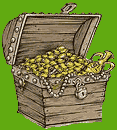 Click here to go to Treasure Hunt.
Click here to go to Treasure Hunt.
Cowboys
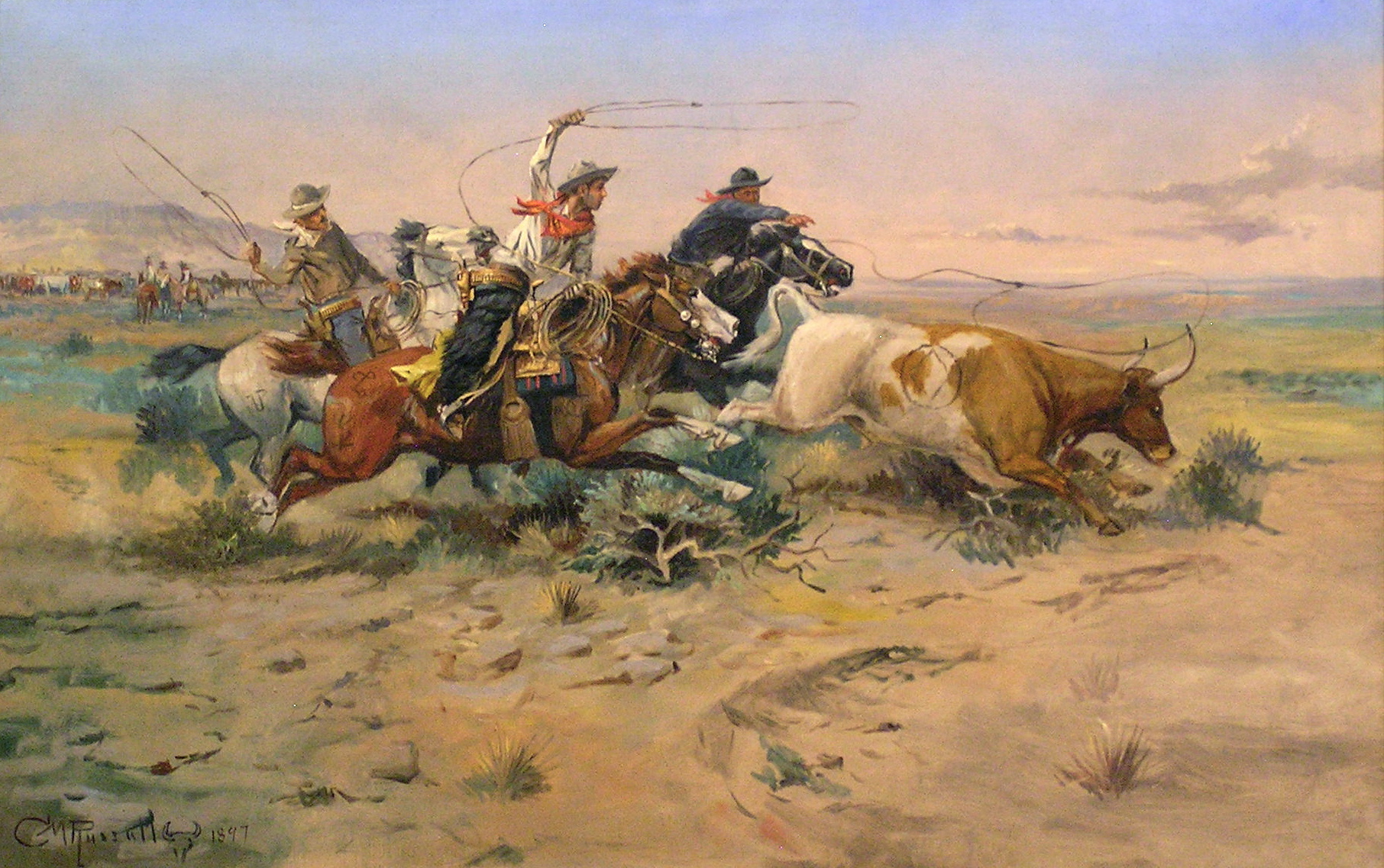
Why are cowboys called cowboys?
They herd cows. There are also Cowgirls who do the same thing.
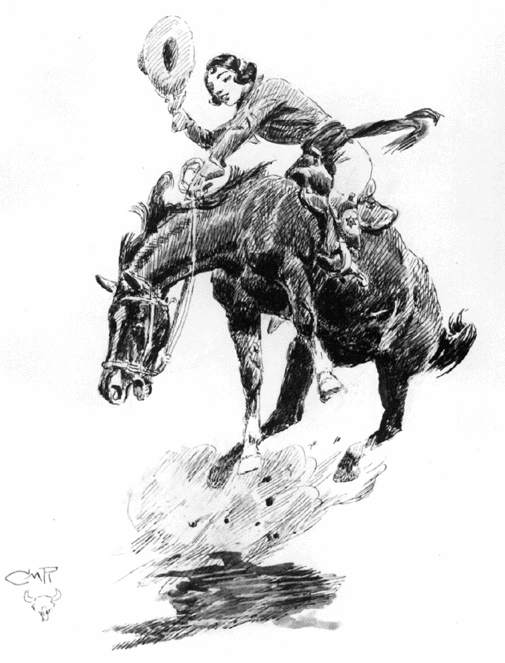
Where did cowboys come from?
The cowboy has roots in Spain beginning with the hacienda system of medieval Spain. The American cowboy of the late 19th century arose from the
vaquero traditions of northern Mexico. These places have a dry climate
with sparse grass, thus large herds of cattle required vast
amounts of land to obtain sufficient forage.
The need to cover
distances greater than a person on foot could manage gave rise to
the development of the horseback-mounted vaquero. The Spanish
brought cows and horses to South America/Mexico in the 16th century.
Where did they go from Mexico?
From Northern Mexico they spread to Texas, New Mexico, and California were originally part of the Spanish colonization of the Americas and until 1836 part of Mexico.
When did cowboys appear in the west in the USA?
The arrival of English-speaking settlers and thus the word cowboys in Texas began in 1821. At that time Texas was still part of Mexico.
Main cowboy era was 1865 to 1885.
Where did they live?
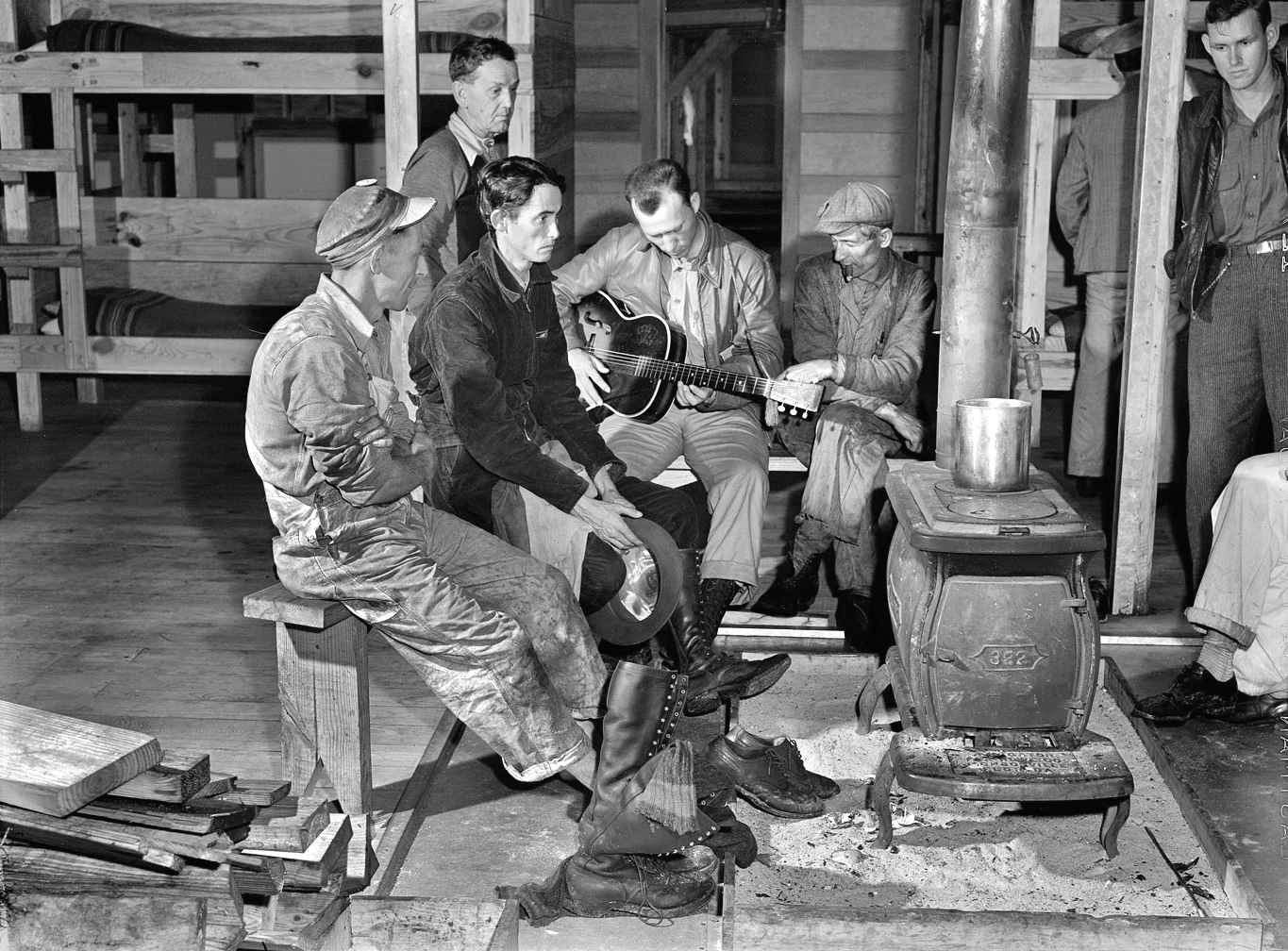
They lived on ranches where there were bunkhouses for the cowboys
who had basically nothing more than a bed (a bunk as in bunkbed).
What do cowboys wear?
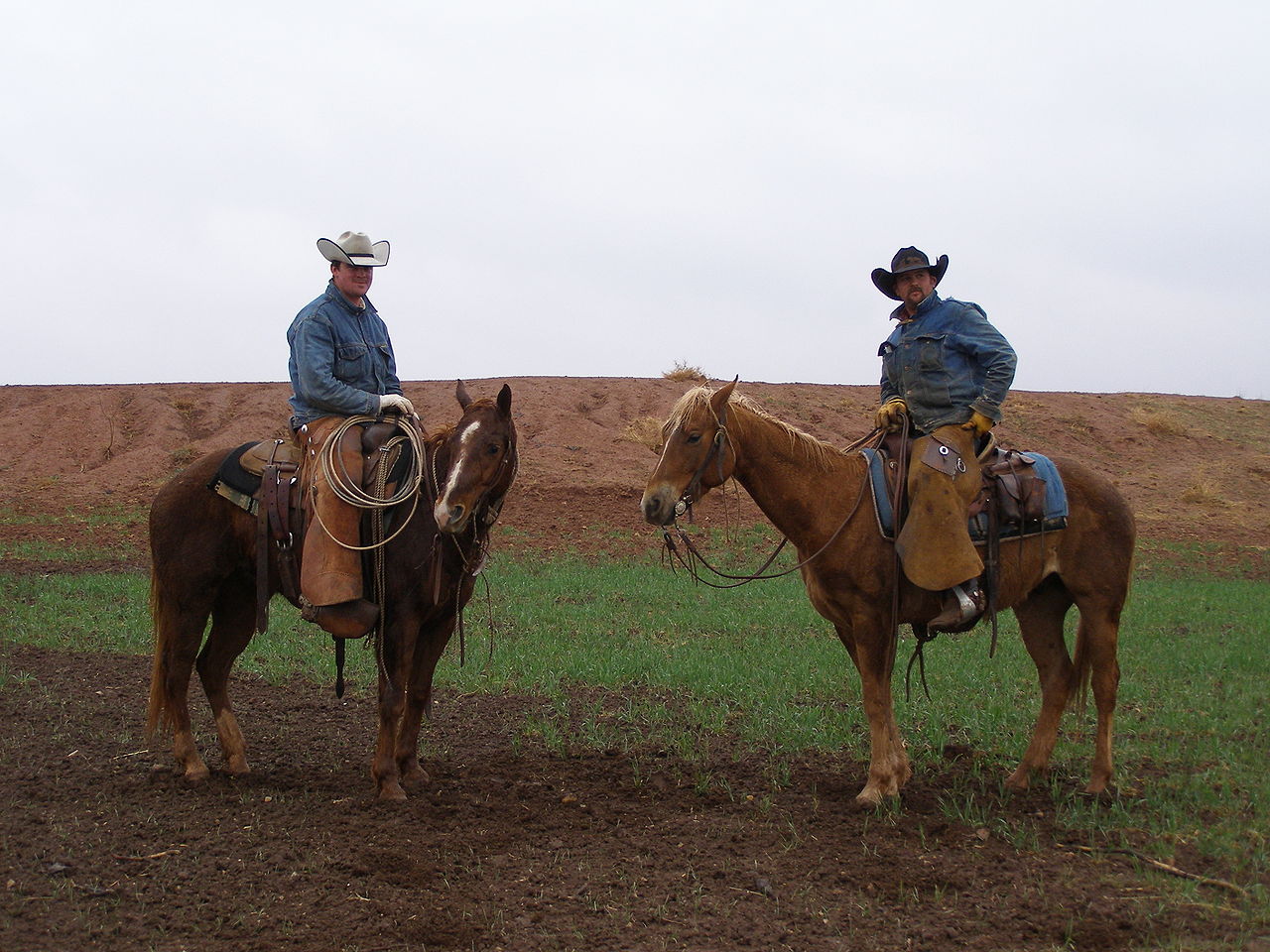
Cowboy Hats - the well-known cowboy hat is called the Stetson and
was introduced by a man named John Batterson Stetson in 1865.
They were highly practical and modified according to weather
conditions, shielding their eyes from the heat or glare of the
sun. The brims could be turned down as protection against the
rain.
Cowboy pants - Blue jeans appeared in the mid 1870's.
Cowboy Vests - Riding on a horse made it difficult to reach into
pants or trouser pockets. The vest had deep pockets that were
easily accessible and prevented stuff from falling out.
Cowboy Jackets - Heavy canvas jackets were added as protection
against the weather and thorn and cactus spines for riding
through desert terrains.
The Bandana - The bandana handkerchief, or scarf, was made of
silk or cotton and tied around the neck in a hard knot at the
front and could be lifted to cover mouth and nose from the dust,
The bandana came in a variety of bright colors, but usually red,
making the cowboy more visible in bad weather, they prevented
sunburn and they were used to mop the sweat from the brow.
Additional uses of the bandana were as washcloths and
tourniquets.
Chaps were long leggings worn over pants for protection against
thorns and cactus. In the Southwest, chaps made of smooth leather
whereas in the North they were made of wool or fur.
Cowboy Boots -The boots feature two inch high heels in order to
rest the boots in the stirrups or to dig into the ground while
roping a calf.
Cowboy Gloves - They were made of the finest weather-proof
buckskin to protect from the cold and rain.
Cowboy Gun Belt - The belt was designed to carry his gun holster.
The belt was worn loose and hung low on the hip. The belt had
loops for about 50 cartridges and, with the gun, weighed several
pounds.
Cowboy Gun - The most popular gun used by cowboys was the Colt
Peace Maker (Colt 45), a deadly revolver capable of carrying
six shots.
What did cowboys do with the cows?
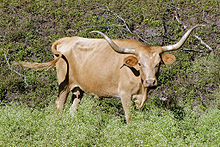
The
primary cattle breed seen on the open range was the Longhorn.
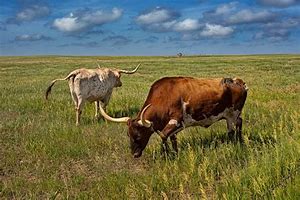
Large numbers of cattle lived in a semi-wild state
on the open range and were left to graze, mostly untended, for
much of the year.
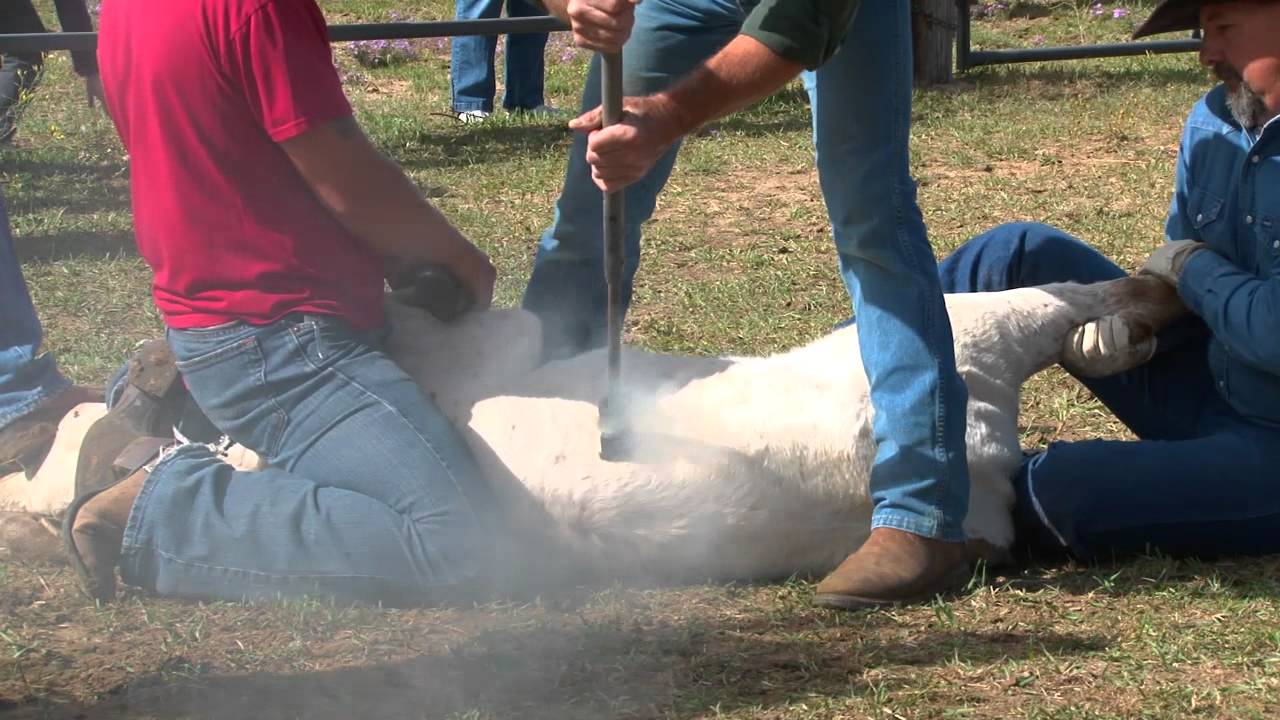
In many cases, different ranchers formed
"associations" and grazed their cattle together on the same
range. In order to determine the ownership of individual animals,
they were marked with a distinctive brand, applied with a hot
iron, usually while the cattle were still young calves.
What is a round up?
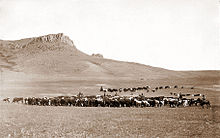
In order to find young calves for branding, and to sort out
mature animals intended for sale, ranchers would hold a roundup,
usually in the spring.
A roundup required a number of
specialized skills on the part of both cowboys and horses.
Individuals who separated a particular cow from the herd required the
highest level of skill and rode specially trained "cutting"
horses, trained to follow the movements of cattle, capable of
stopping and turning faster than other horses.
Once cattle
were sorted, most cowboys were required to rope young calves and
restrain them to be branded and (in the case of most bull calves)
castrated. Occasionally it was also necessary to restrain older
cattle for branding or other treatment.
What is a rodeo?
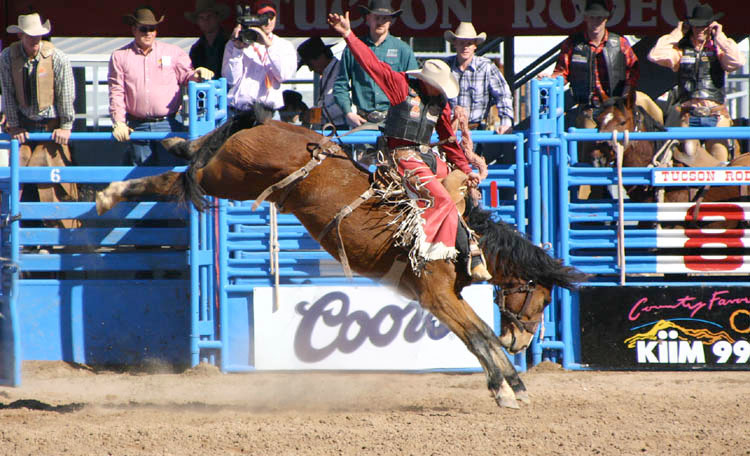
A rodeo is a show where cowboys compete in skills needed for the
roundup. Staying on a horse while trying to lasso a cow was not easy. At the rodeo cowboys had to stay on a bucking bronco as long as possible.
What is the wild west?
It included the prairie of the Midwest, deserts and mountains all
west of the Missippi River.
What did a wild west village look like?
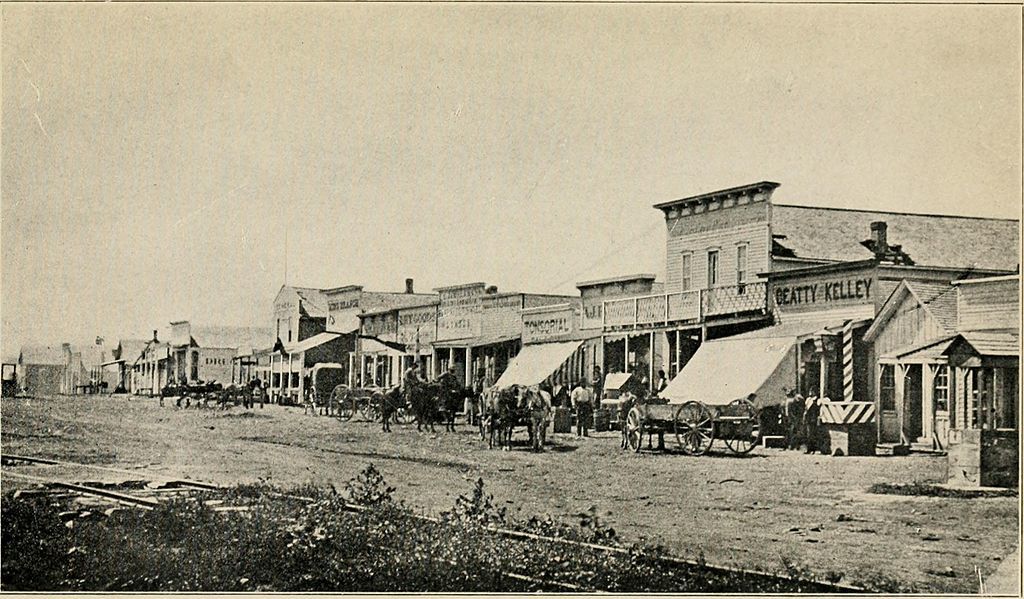
Stage coaches traveled to villages to bring mail and passengers.
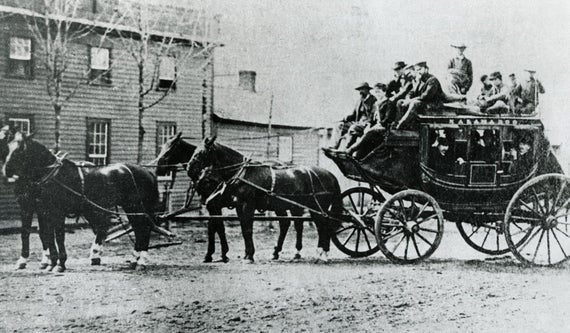
Often braving terrible weather, pitted roads, treacherous
terrain, and Indian and bandit attacks.
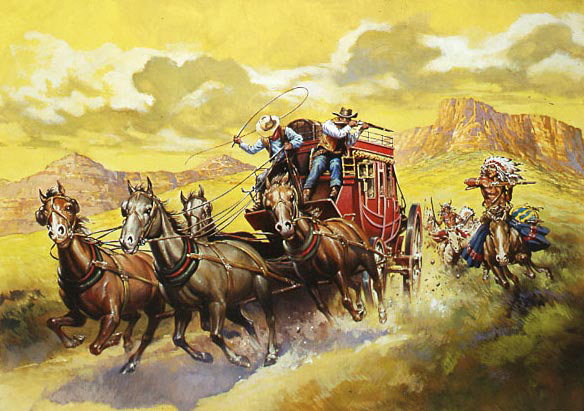
The stage operations began in 1858 between St. Louis and San Francisco, and traveling 24 hours a day, the 2,800-mile trip took 25 days!
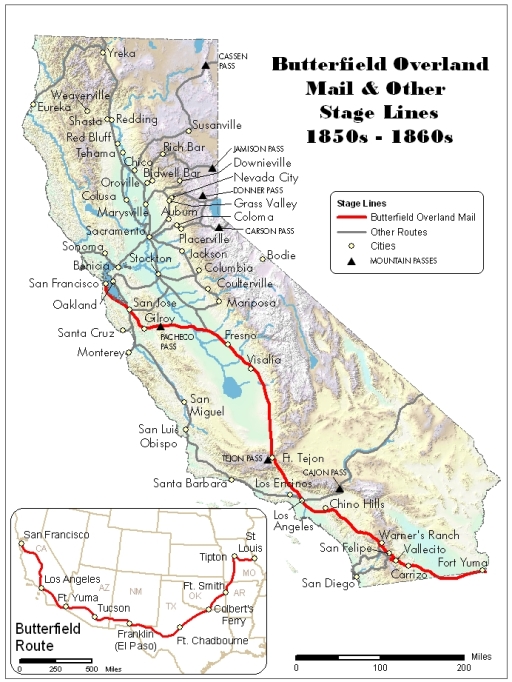
What happened to the buffalo when the cows came?
Buffalo were killed to force native americans to go somewhere else or
adapt to living on farms. Whites wanted the land for settlers who
created farms.
Native Americans could no longer live from Buffalo hunting as
they were all killed, so many native americans worked as cowboys.
Most cowboys came from lower social classes and the pay was poor.
The average cowboy earned approximately a dollar a day, plus
food, and, when near the home ranch, a bed in the bunkhouse,
usually a barracks-like building with a single open room.
Who was buffalo Bill?
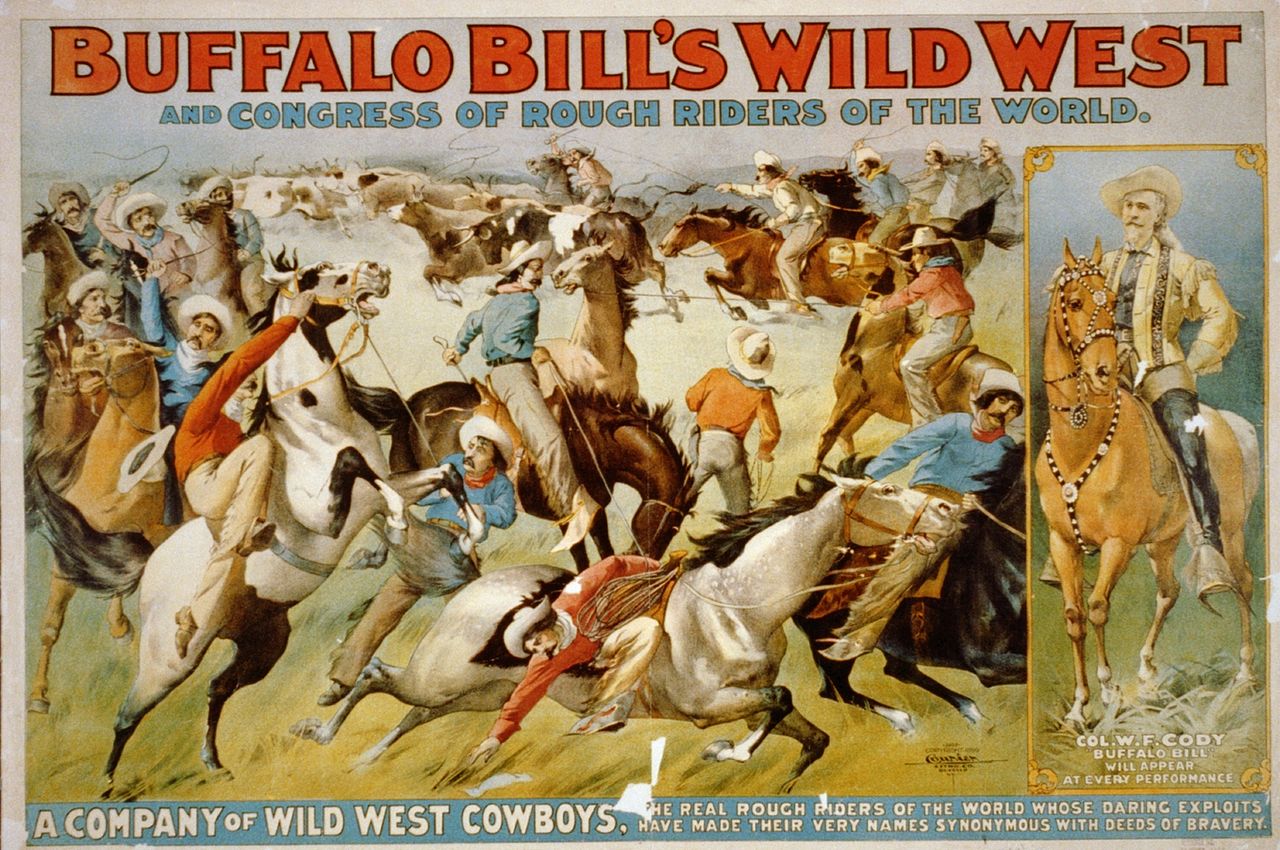
William Cody joined the Cavalry at 17 and he earned the name
“Buffalo Bill” because in one 18-month stretch he claimed to have
killed 4,280 buffalo.
In 1870, a bull hide sold for $3.50.
buffalo were killed after 1873 to sell the hides, the meat was
not used. So many were killed that there were almost none left.
Sheriff, bandits, saloons
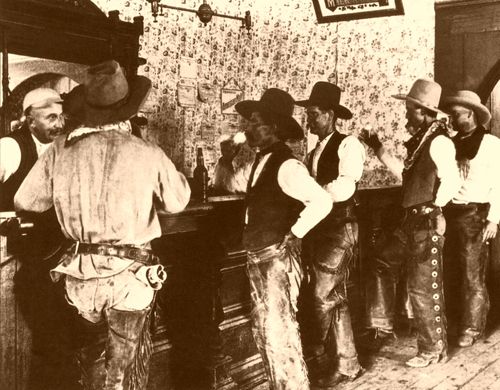
Saloons mostly were wooden buildings with a wooden boardwalk in front. There were hitching posts to tie horses, a water source would be located close by
for horses to drink. The front doors always consisted of two
swinging doors, The bar itself was very long to accommodate many
standing customers.
Often bandits were cowboys who couldn't find work, especially in
the winter. Even sheriffs became bandits if they thought they
could get rich.
Bandits generally attacked and robbed stage coaches,
banks in villages, and trains. But all of these had heavily armed
guards.
Why were railroads built through the west?
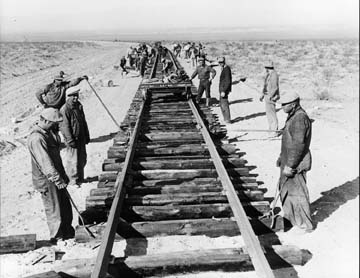
There was an increased demand for beef in cities in the East in
the wake of the American Civil War. It was necessary to get
cattle to these markets which were far away, so that is why
railroads were built.
Where was the meat sold?
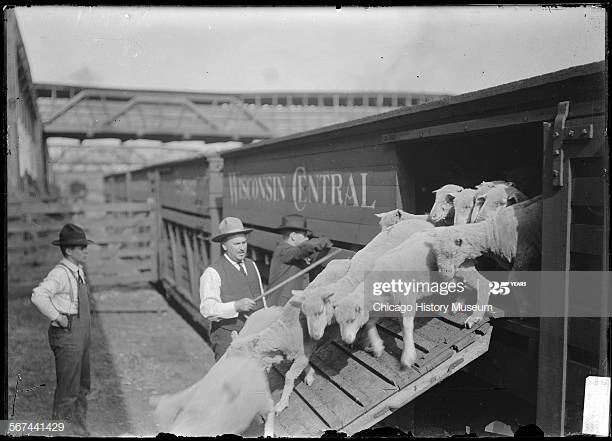
In cities, mostly in Chicago. In 1866 Philip Danforth Armour opened a meat packing plant in Chicago
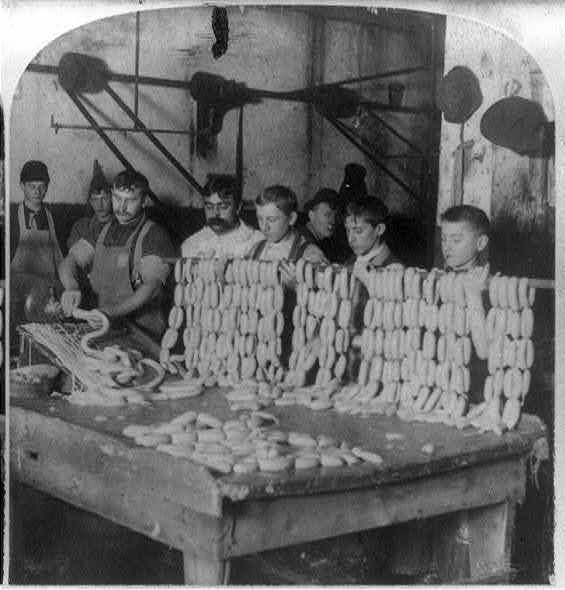
Cattle were driven to nearest railroad stations which were not
nearby. In 1867, a cattle shipping facility was built west of farm
country around the railhead at Abilene, Kansas.
By 1866, cattle could be sold to northern markets for
as much as $40 per head, making it potentially profitable for
cattle, particularly from Texas, to be herded long distances to
Kansas or other railroad stops.
On average, a herd could maintain
a healthy weight moving about 25 km per day. Such a
pace meant that it would take as long as two months to travel
from a home ranch to a railhead. The Chisholm trail, for example,
was 1,000 miles (1,600 km) miles long. a single herd of cattle on
a drive numbered about 3,000 head.
There was an increased demand for beef in cities in the East in
the wake of the American Civil War. It was necessary to get
cattle to these markets which were far away, so that is why
railroads were built.
Where was the meat sold?
In cities, mostly in Chicago. In 1866 Philip Danforth Armour opened a meat packing plant in Chicago
Cattle were driven to nearest railroad stations which were not
nearby. In 1867, a cattle shipping facility was built west of farm
country around the railhead at Abilene, Kansas.
By 1866, cattle could be sold to northern markets for
as much as $40 per head, making it potentially profitable for
cattle, particularly from Texas, to be herded long distances to
Kansas or other railroad stops.
On average, a herd could maintain
a healthy weight moving about 25 km per day. Such a
pace meant that it would take as long as two months to travel
from a home ranch to a railhead.
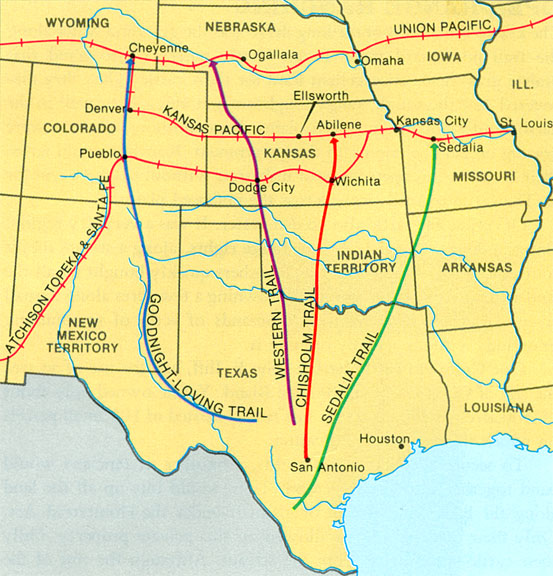
The Chisholm trail, for example,
was 1,000 miles (1,600 km) miles long. a single herd of cattle on
a drive numbered about 3,000 head.
What happened when the land was fenced in?
Barbed wire, an innovation of the 1880s, allowed cattle to be
confined to designated areas to prevent overgrazing of the range.
In Texas and surrounding areas, increased population required
ranchers to fence off their individual lands.
Because of overgrazing, fences
allowed some areas to regrow after overgrazing. In the north,
overgrazing led to insufficient winter forage for the cattle and
starvation, particularly during the harsh winter of 1886–1887.
The free open range was gone and cattle could not be claimed by
anyone except the owners.
When did long cattle drives end?
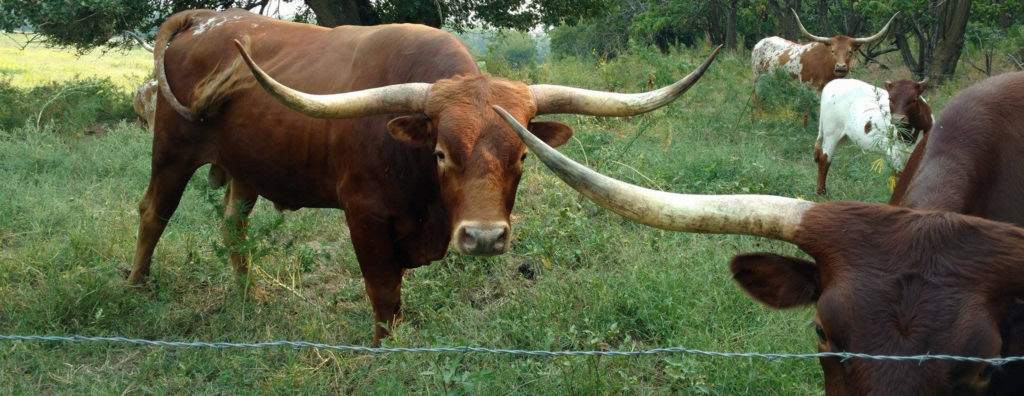
By the 1890s, barbed wire fencing was everywhere. Railroads
had expanded to cover most of the nation, and meat packing plants
were built closer to major ranching areas, making long cattle
drives from Texas to the railheads in Kansas unnecessary. Hence,
the age of the open range was gone and large cattle drives were
over.
North American Indians
Go to Part Two of Indians in North America.
When did the first people come to America?
There are different answers. But most recent research show it could have been 20,000 to 30,000 years ago.
Where did they come from?
They came from Beringia. This place no longer exists. Part of it is in Russia, part in Alaska and Canada. During the Ice Age the oceans were much lower because lots of the ocean water was frozen. That is why there was land in all of Beringia and people, animals and plants could move easily over the whole area. Ice probably did not cover the whole area in summer. But when the Ice Age ended about 10,500 years ago the seas rose and it was no longer possible to walk from Asia to North America
The people of Beringia which was a very cold place as Siberia is today probably came from central Asia. Here there was a mixture of European types of people and Asian types of people. Thus American Indians are partly Asian and partly European.
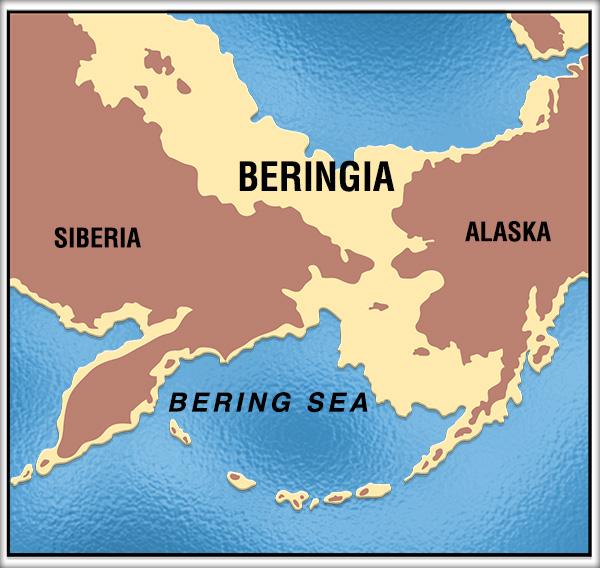
Even though most of Alaska and Canada were covered with Ice in the Ice Age, there was a break in the ice sheet all the way from Alaska to the south where there was no ice. The Indians could travel this way. Some lived in this ice free area and some moved on all the way to South America.
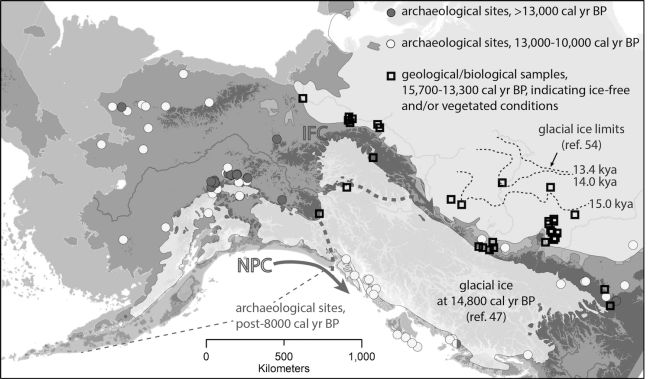
What did they eat?
The first people to arrive in North America were hunters and gatherers. They also caught fish. They lived much like Stone Age people everywhere. Even though it was cold in Beringia, it was apparently never covered with ice in summer, thus there were many animals and plants for people to eat. They could hunt woolly mammoths, woolly rhinoceroses, reindeer and moose.
what did they wear?
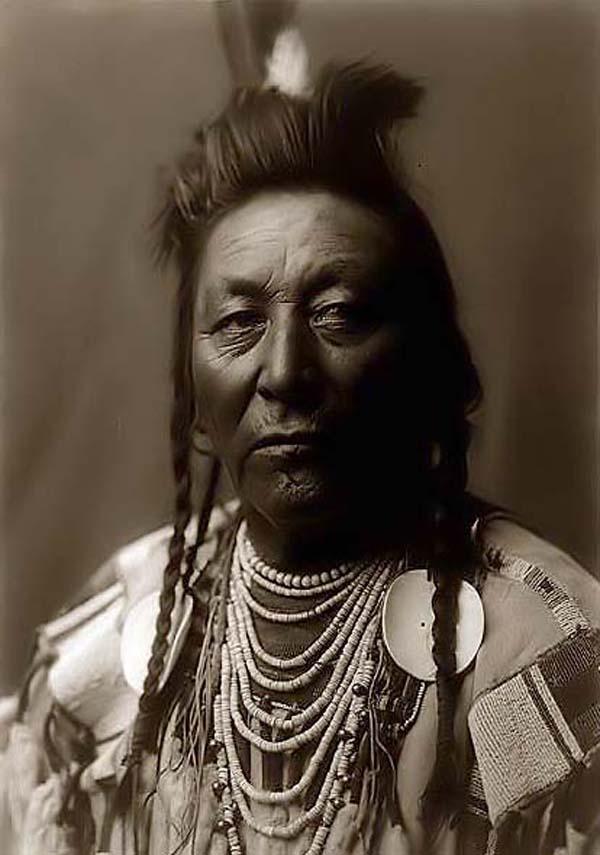
Like everywhere in the Stone Age they wore clothes made of animal skins. They used shells, bones, feathers, animal tusks, stones and other natural objects for decoration.
what language did they speak?
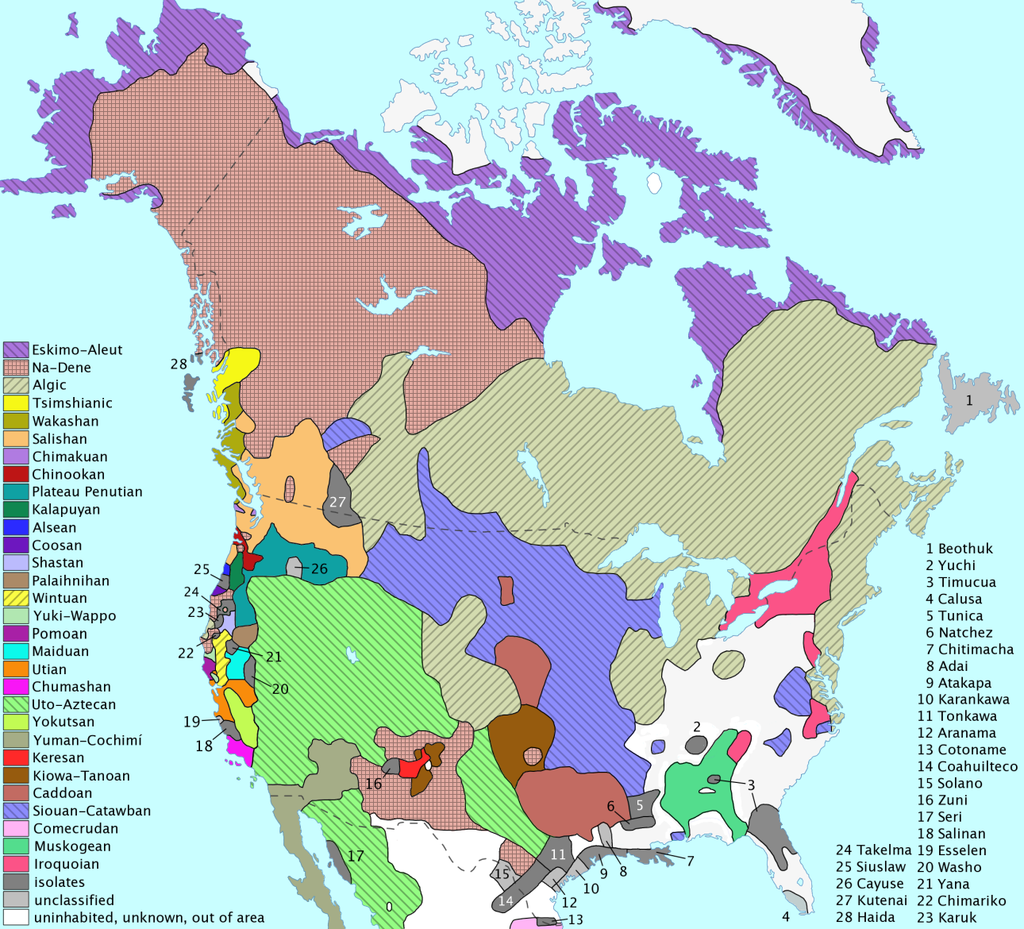
There is no way to know what language the first people spoke. But Indian tribes in North America eventually came to speak many different languages. These languages are not related to any other languages, though they may have a very slight resemblence to each other.
which were the largest Indian tribes in the USA and where did they live?
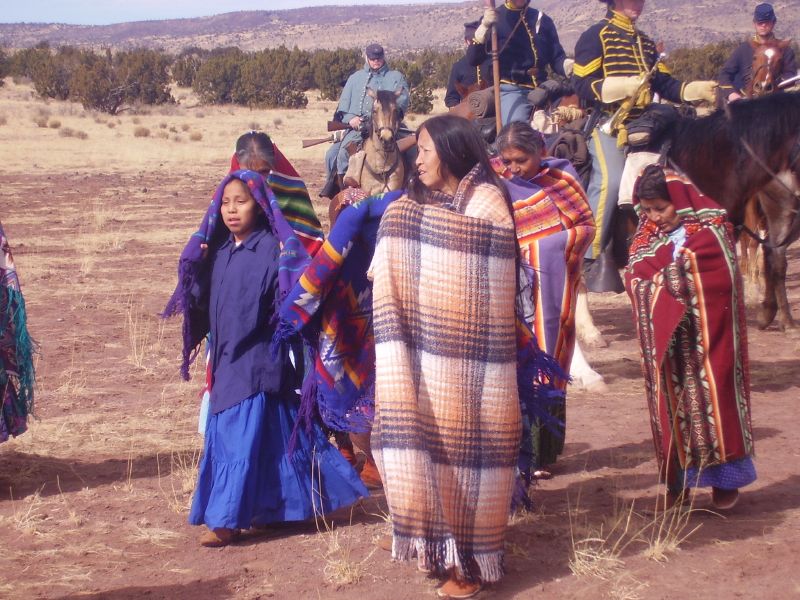
1. Navaho
live in Southwest USA
native language Diné
hunting and farming crops and livestock. Historically, the Navajos’ livestock frequently included sheep maintained for wool that could be woven into clothing, blankets, and rug.
live in dwellings called hogans, which were made by layering bark and mud over frameworks made from sticks and wood. Hogans always faced east for sunlight.
2.Cherokee
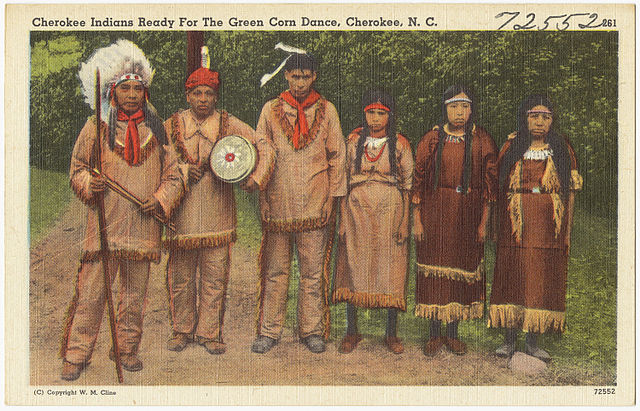
live in Southeast Usa
language Cherokee
agriculturally-focused and advanced tribe, the Cherokee farmed much of their food, supplementing their diets with hunted and gathered resources. grew their crops in the fashion of the “Three Sisters,” farming corn, beans and squash together so that the plants assisted one another.
3.Sioux
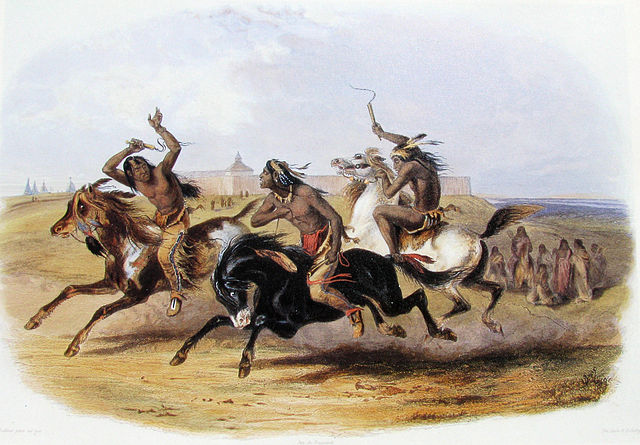
lived Great Plains
language Lakota
hunting and traveling on horseback. They often traded to get corn from more agriculturally established groups. Theylived in teepees.
4.Chippewa (Ojibwe)
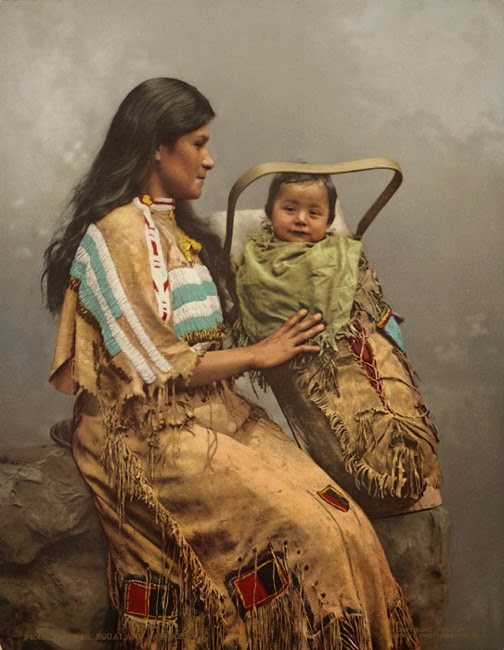
Northern USA around Great Lakes
language Ojibwe
lived by agriculture hunting and gathering, skill at crafting birchbark into dwellings and canoes.
5. Choctaw
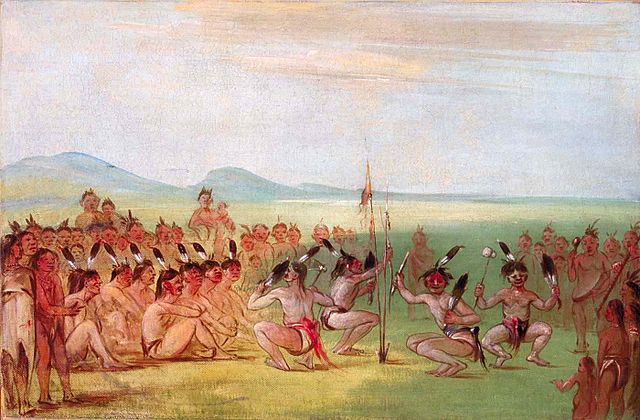
Southeast USA
language Choctaw
they were code talkers in World war II.
6.Apache
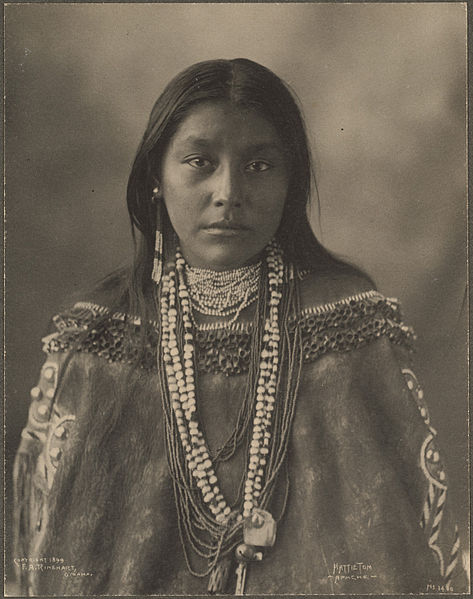
Southwest USA
nomadic and fierce
7.Pueblo
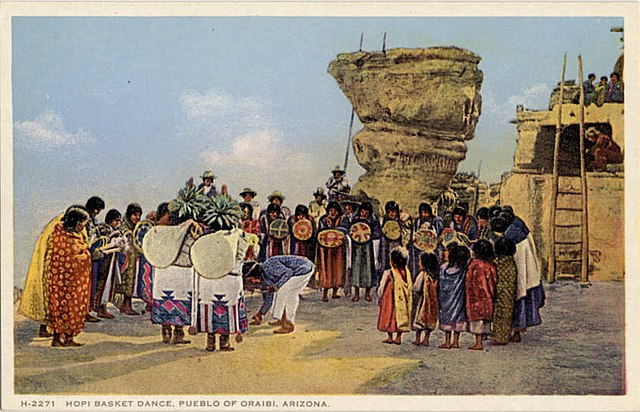
southwest USA
languages Zuni, Hopi
lived in villages
agriculture and developed system of irrigation
8. Iroquois (Haudenosaunee)
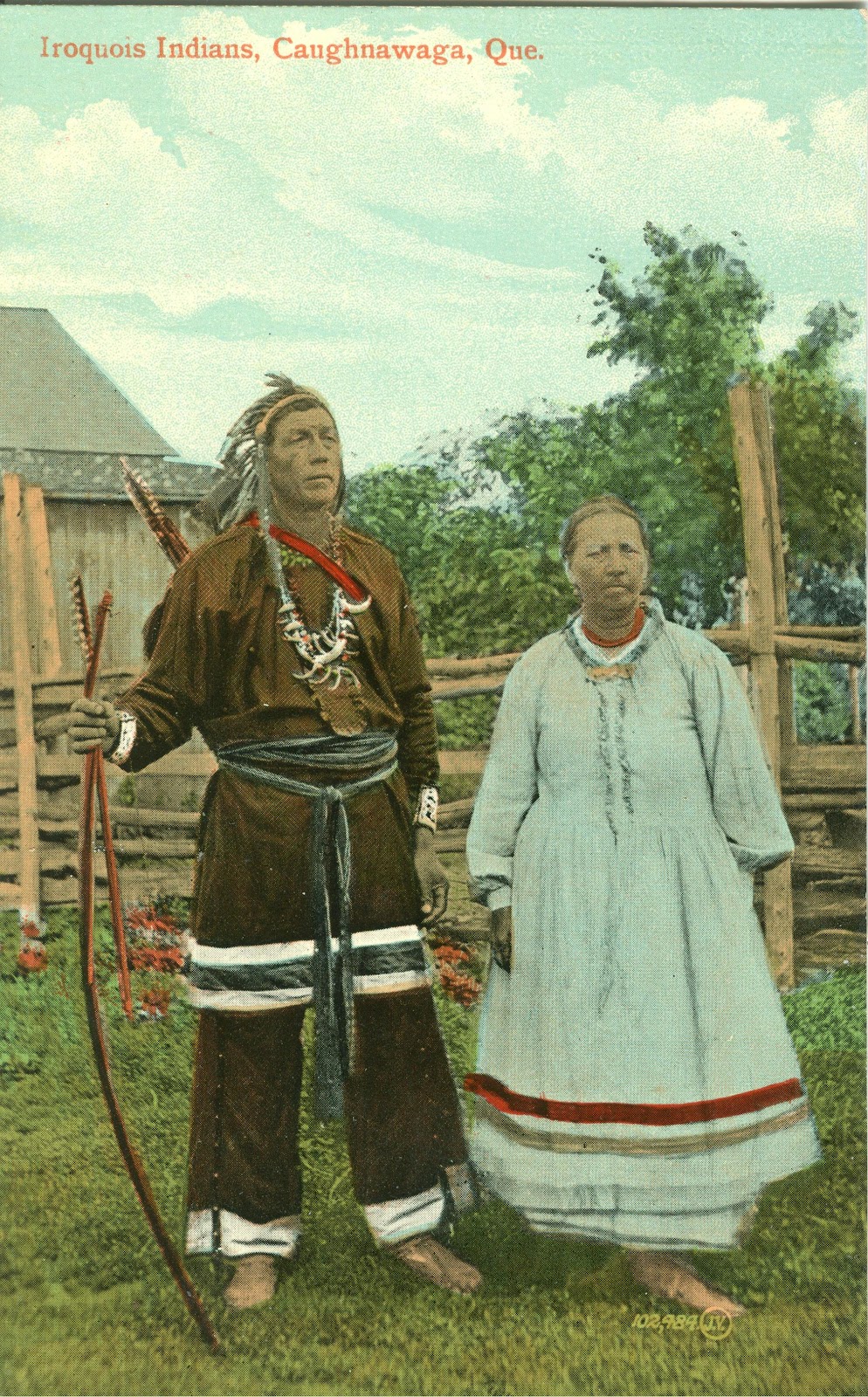
Northeastern USA and eastern Canada
languages Mohawk, Seneca, Oneida
“Haudenosaunee,” means “people of the longhouse” in reference to the distinctive dwellings that they historically lived in. Longhouses were crafted from wood and housed several families.
They lived mostly from agriculture
9. Creek (Muskogee)
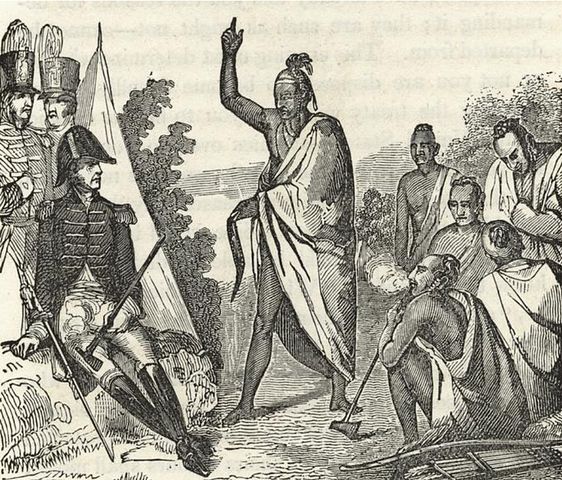
Southeastern USA
language Muskogee Creek
tribe was historically rather peaceful, putting a lot of their energy into thoroughly developing social roles and cultural arts. These arts included intricately developed clothing and the common practice of tattooing large areas of their bodies. The Creeks were considered by settlers to be among the Five Civilized Tribes, along with the Chickasaw, Cherokee, Choctaw, and Seminole tribes
10.Blackfoot
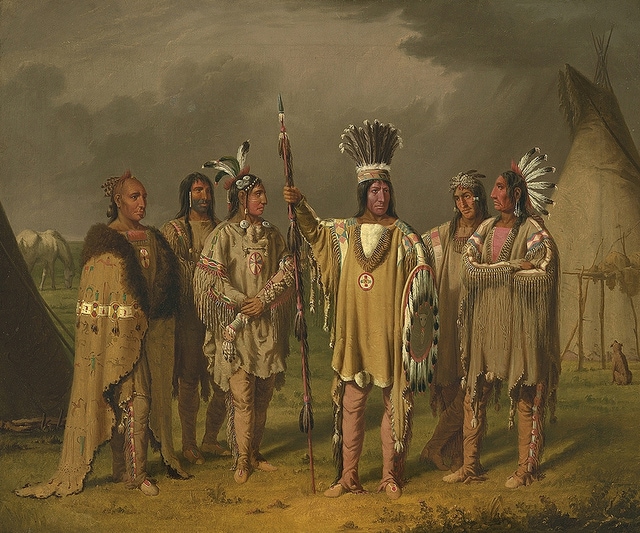
lived Montana Midwest
language Algonquian
nomadic, hunting gathering
buffalo hunters and a powerful territorial force, asserting themselves wherever they migrated.
Did American Indians have agriculture?
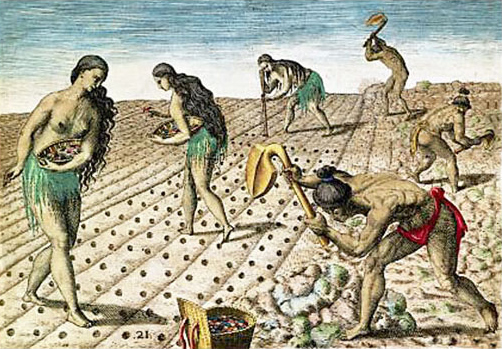
Planting corn

Making flour out of corn.
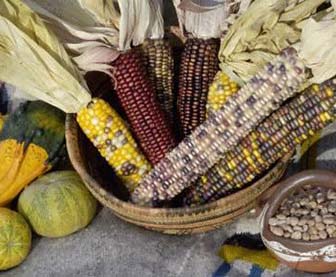
squah, corn and beans
climate changes (beginning about 10,000 BCE) resulted in warmer and drier weather, a contributing factor in the extinction of megafauna, such as the mastodon and mammoth that were hunted by the stone-age Indians. Besides climate change, the large animals may have perished due to increased human population and their improved hunting techniques. By 6000 BCE two-thirds of all North American animals weighing more than 100 pounds were extinct and the bison was the only large animal to survive on the Great Plains.
Some Indian tribes remained nomadic. They moved to where they could find food, especially larger animals like deer or moose to hunt or good fishing areas.
They followed a new pattern called "making the seasonal rounds" where they moved to familiar places based upon the growing seasons of plants, their major source of food. In the spring, summer and early fall women harvested seeds, nuts, fruit, grasses, juniper berries and mesquite beans. Any surplus food was stored for later use. Men hunted small game like rabbits using traps and snares. During the fall and winter men hunted deer, big horn sheep, bison and antelope with the atlatl and darts.
These tribes did not have permanent villages, but they did trade with tribes for agricultural goods, tools, weapons and ornaments. Most Indian tribes in the USA used agriculture. The main crops were squash, beans, and corn. Some of them combined agriculture and hunting and gathering and had summer and winter villages and camps, with the village being permanent.

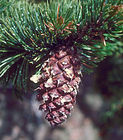
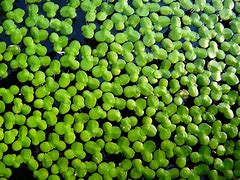
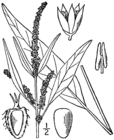
Besides the three main foods Northamerican Indians cultivated tomatoes, sunflowers, amaranth to make flour, pumpkins, gourds, sumpfweed, goosefoot.
Did they live in towns?
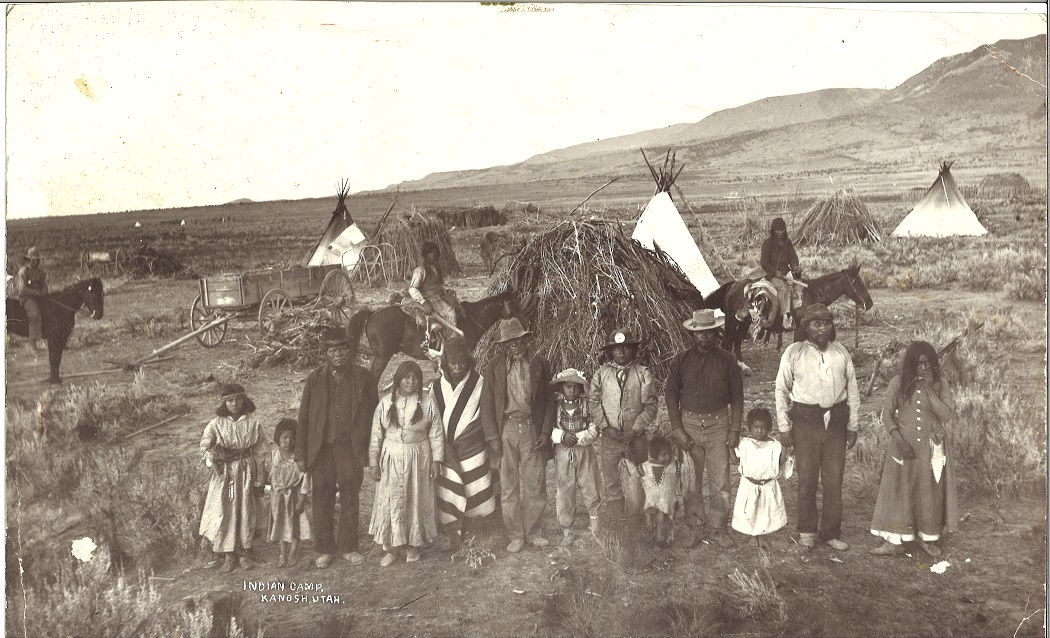
Some tribes did not live in villages. This is a Kanosh Camp in Utah.
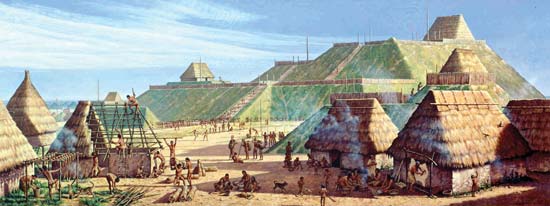
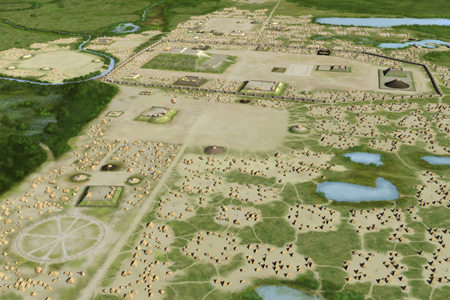
Two views of Cahokia in Illinois. The map shows that many people lived there. It was a ceremonial city which people also came from further away to the ceremonies.
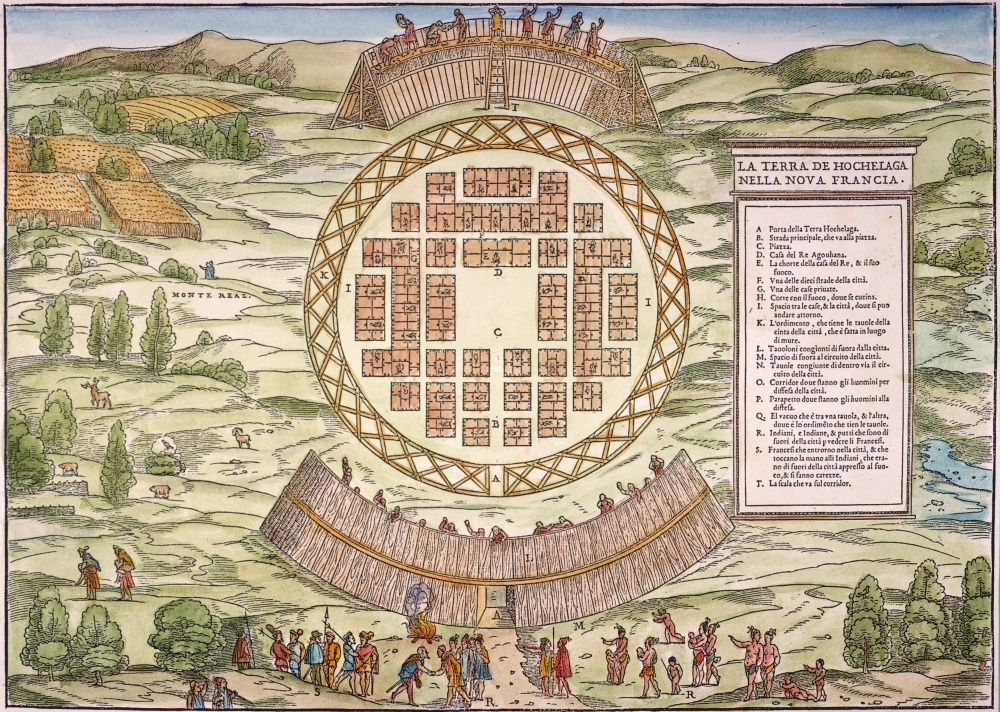
map of Iroquois village
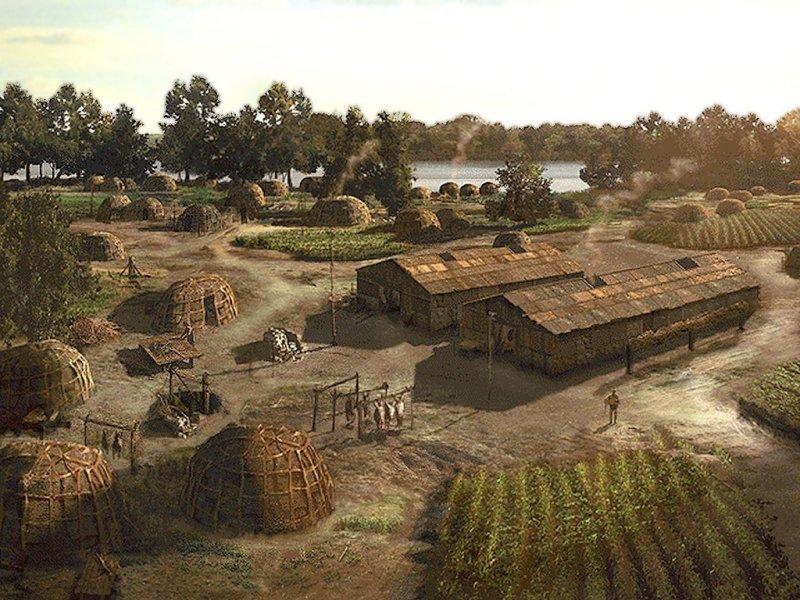
Shawnee village
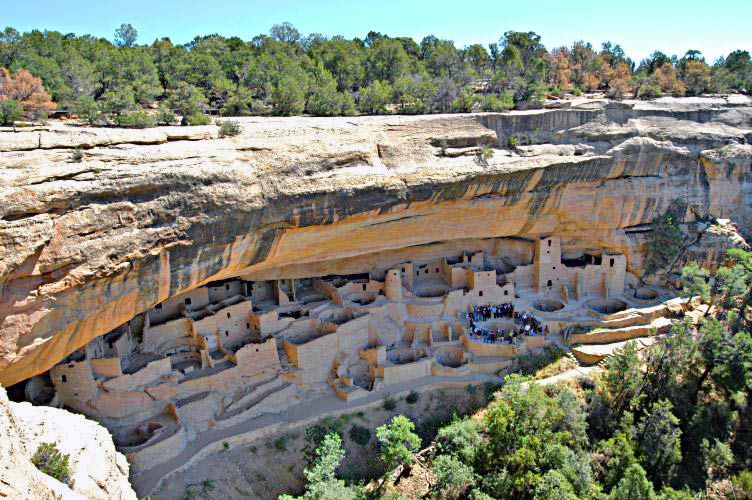
Mesa Verde Colorado
During the time of population increase, in the early 13th century, people began creating what are called "cliff dwellings," which are houses, and in some cases entire villages, built into cliff edges. The National Park Service estimates that there are about 600 of these preserved at Mesa Verde National Park. Built near springs, the naturally enclosed sites offered protection against both the elements and intruders.They could only be entered with ladders.
Each family generally lived in a single room of the building unless they grew too large, at which time; side-rooms were sometimes added. The houses of the pueblo were usually built around a central, open space or plaza in the middle of which was a “kiva,” a sunken chamber used for religious purposes.
Houses were made from stone, adobe mud, and other local material, or were carved into the sides of canyon walls.
At one Mesa Verde site called "Sand Canyon," people late in the 13th century were depending more on wild plants and were eating less domesticated turkey. With the population shrinking, the site fell into ruin and "refuse was being deposited in once-important civic or ceremonial structures, such as the great kiva".
There were also signs of a battle.
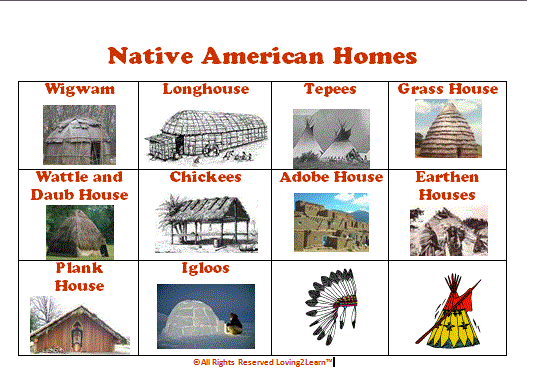
Types of Indian houses
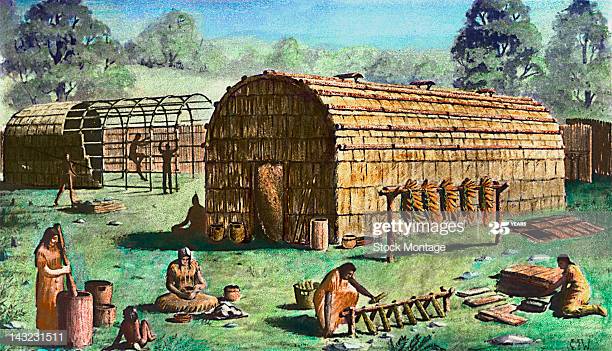
Building long houses
Originally Indians did not live in towns, but by about 2000 B.C. some tribes in the east of the US and in the southwest began forming villages and developing agriculture which was invented separately in these two areas. By about 2500 BC: The Cochise become skilled farmers of the American Southwest, but agriculture would not be consistently adopted until the 1st century AD. Most tribes then lived in towns at least part of the year. If their main source of food was agriculture, the towns were permanent. Some towns could be quite large, but none were as big as in Mexico where Mexico city then called Tenochtitlán may have had 1 million inhabitants under the Aztecs.
Towns had both houses where the families lived and public areas where ceremonies took place, or where public gatherings occurred and decisions for the tribe were made. There were also storage areas where food was kept.
Trade
Mesa Verde took part in a vast trade network. "The presence of Chaco-style pottery vessels, macaw-feather sashes, and copper bells at some sites indicates that the Pueblo people of the Mesa Verde region were part of a vast trading network that included distant locations in Mexico. But all tribes traded with each other, thus objects and ideas spread all over North America.
How did they travel and carry goods?
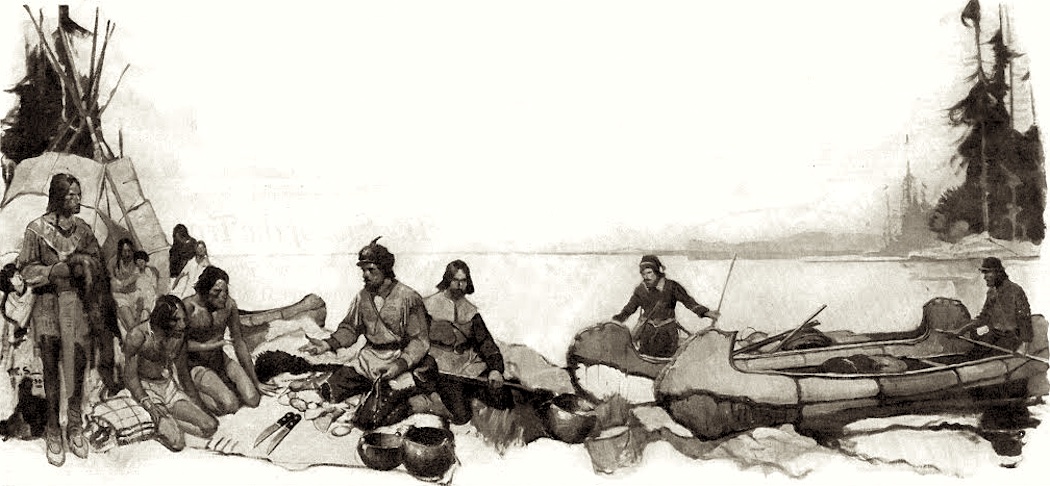
trading furs, beads and silver
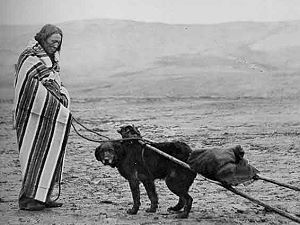
travois with dog
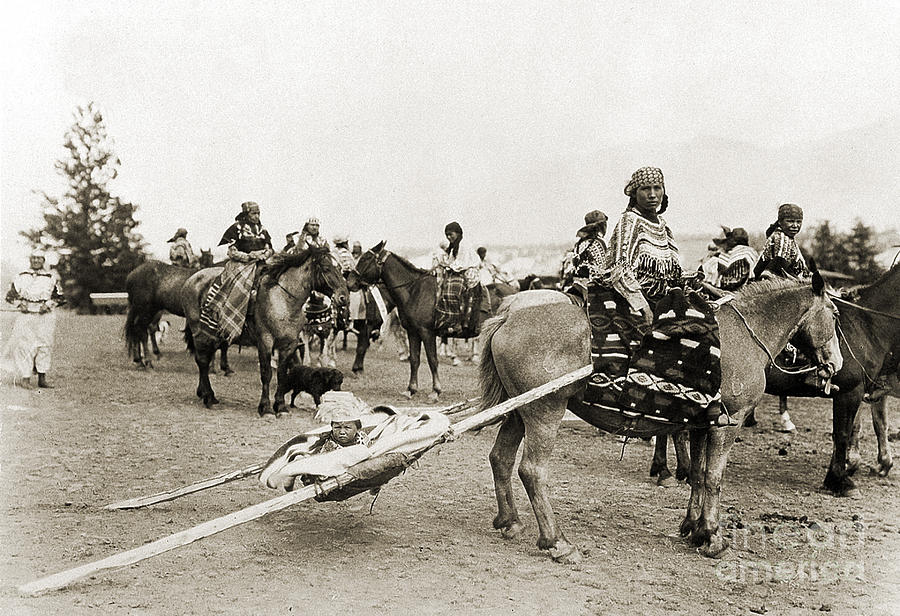
travois with horse
Where there were rivers they used canoes.
Travois: they did not have wheeled vehicles. Instead, they used a travois. A travois was a buffalo or other skin spread over long poles. Goods were piled on the skin. The dogs dragged goods on a travois. A big, strong dog could manage a load of just seventy-five pounds or less.
After about 1550 Horses pulled the travois. The travois was usually nothing more than parts of their tipi. Instead of dragging tipis, they set the tipis to work carrying goods.
The Indians got their first horses from the Spanish. When the Spanish explorers Coronado and DeSoto came into America they brought horses with them. This was in the year of 1540. Some horses got away and went wild.
Before they had horses Indians used dogs to carry things. They probably brought the dogs with them when they came from Berlingia.
American Indian Handicrafts
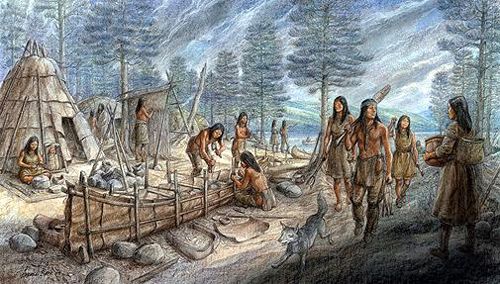
Making a canoe out of birch bark
Basket making
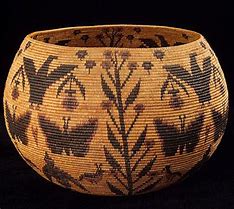
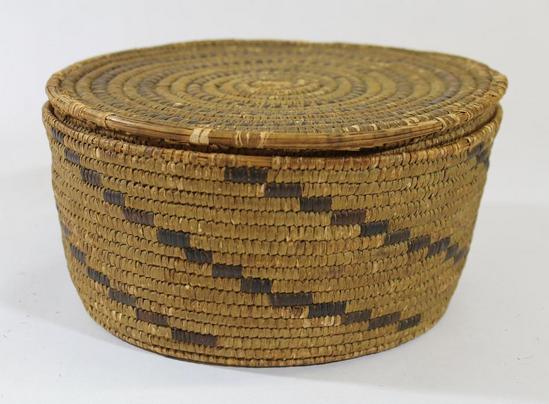
>Baskets
Early Basketmaker Era (7000 - 1500 BCE) was an Archaic cultural period of ancestors to the Ancient Pueblo People. They were distinguished from other Archaic people of the Southwest by their basketry which was used to gather and store food. They became reliant on wild seeds, grasses, nuts and fruit for food and changed their movement patterns and lifestyle by maximizing the edible wild food and small game within a geographical region. Manos and metates began to be used to process seeds and nuts. With the extinction of megafauna, hunters adapted their tools, using spears with smaller projectile points and then atlatl and darts. Simple dwellings made of wood, brush and earth provided shelter.
Pottery
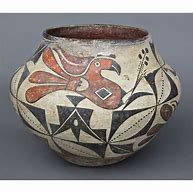
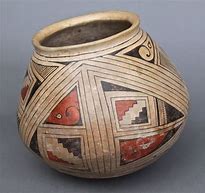
pottery
Pottery making began after 3000 B.C. in the south and spread slowly.
Indian weapons and tools - bow and arrows, spears, atlatl, darts, tomahawks, knives
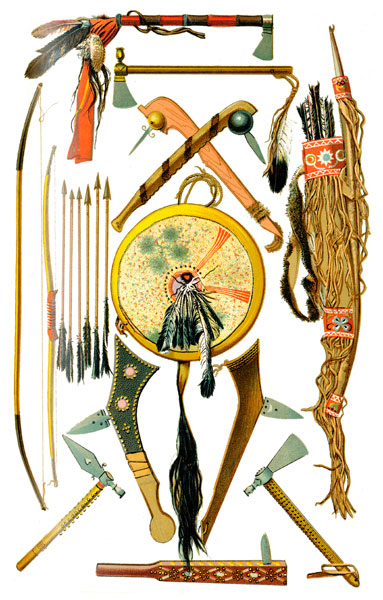
various Indian weapons

This is an atlatl which is a cross between a sling and a bow and arrow

tools
Amerindian fabrics, clothing, rugs and blankets
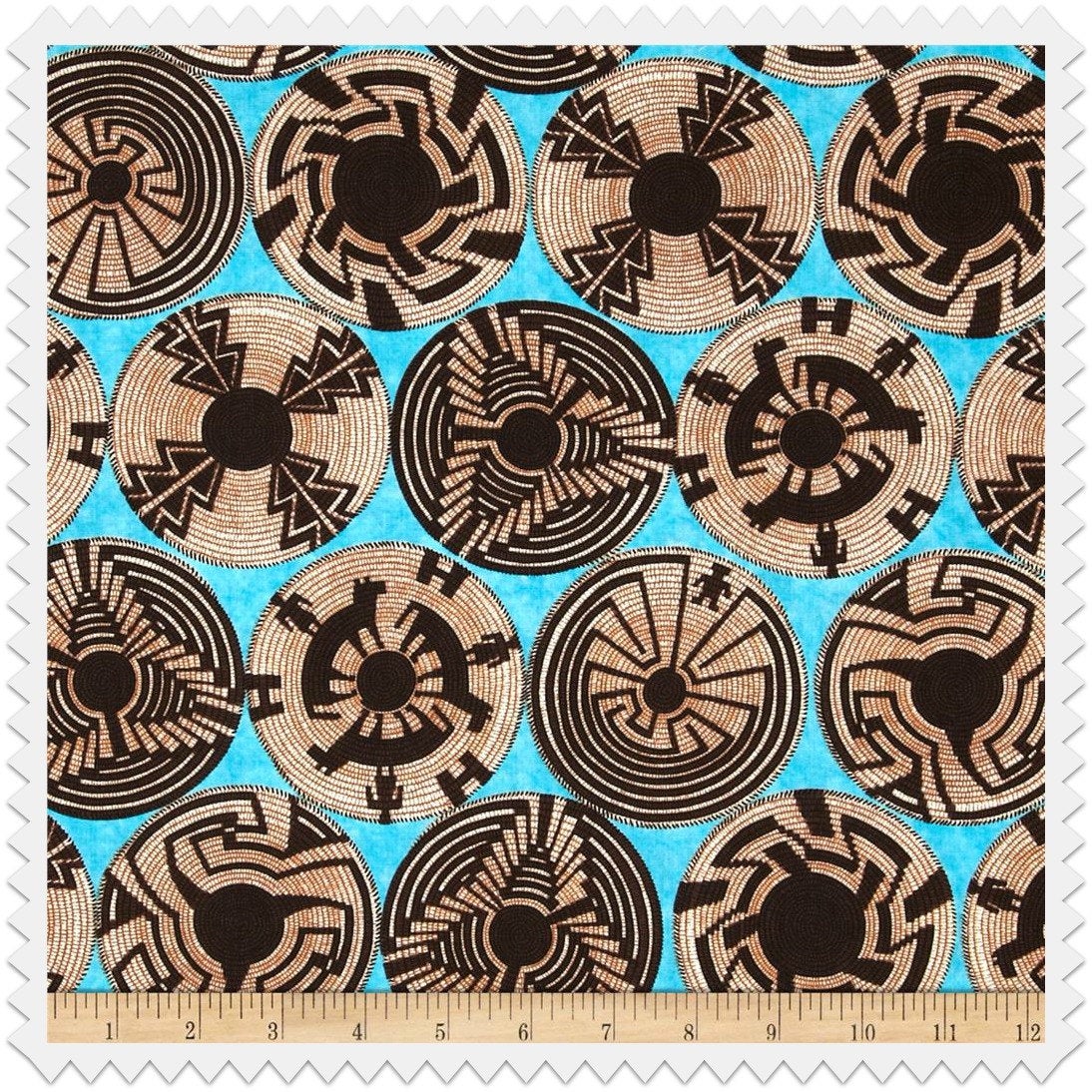
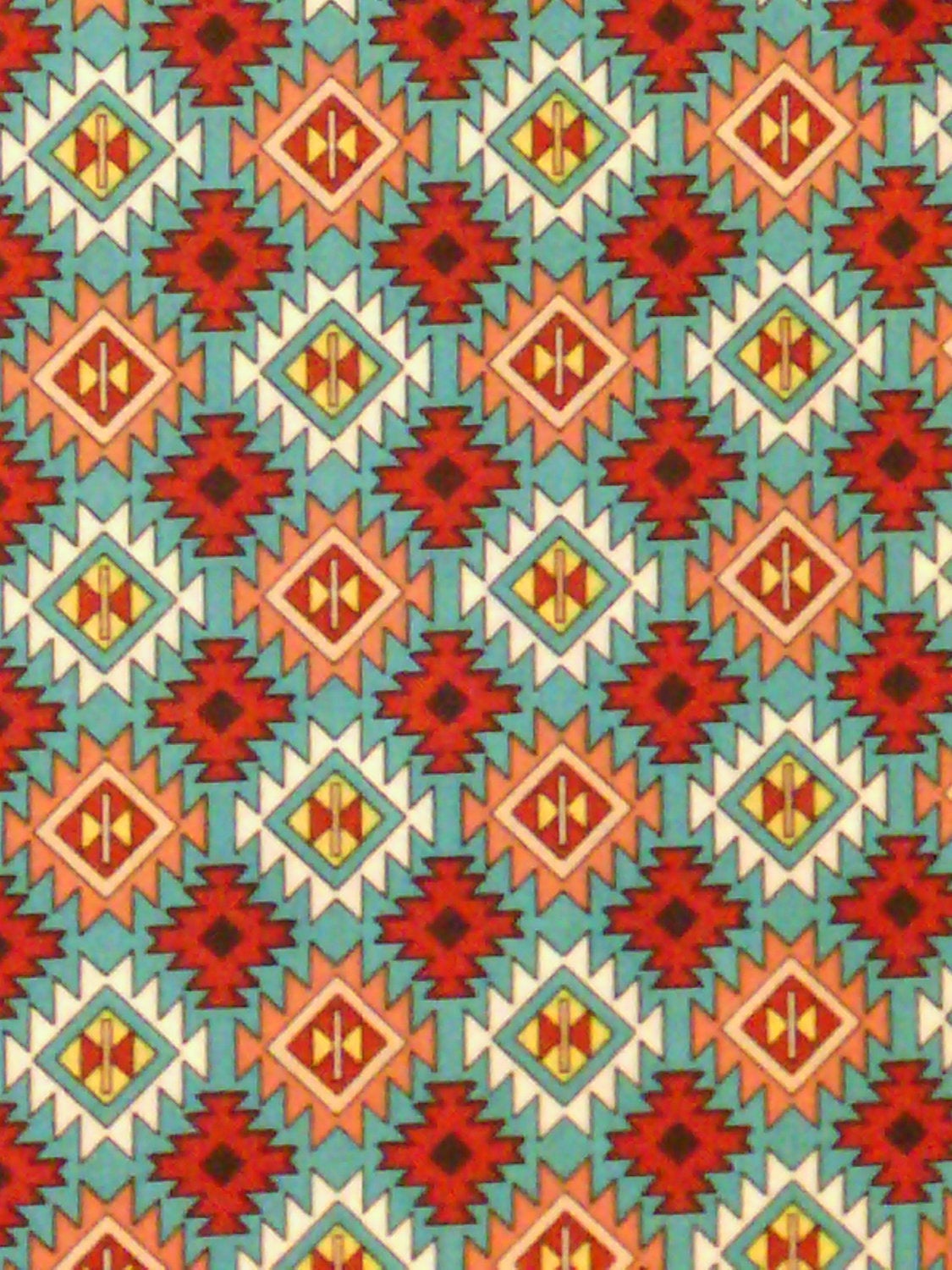
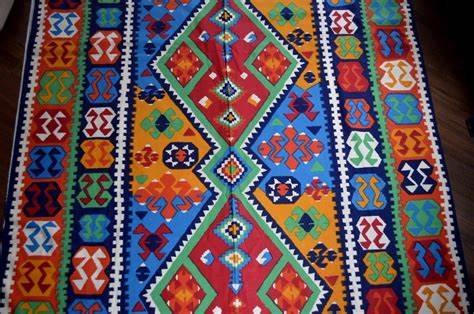
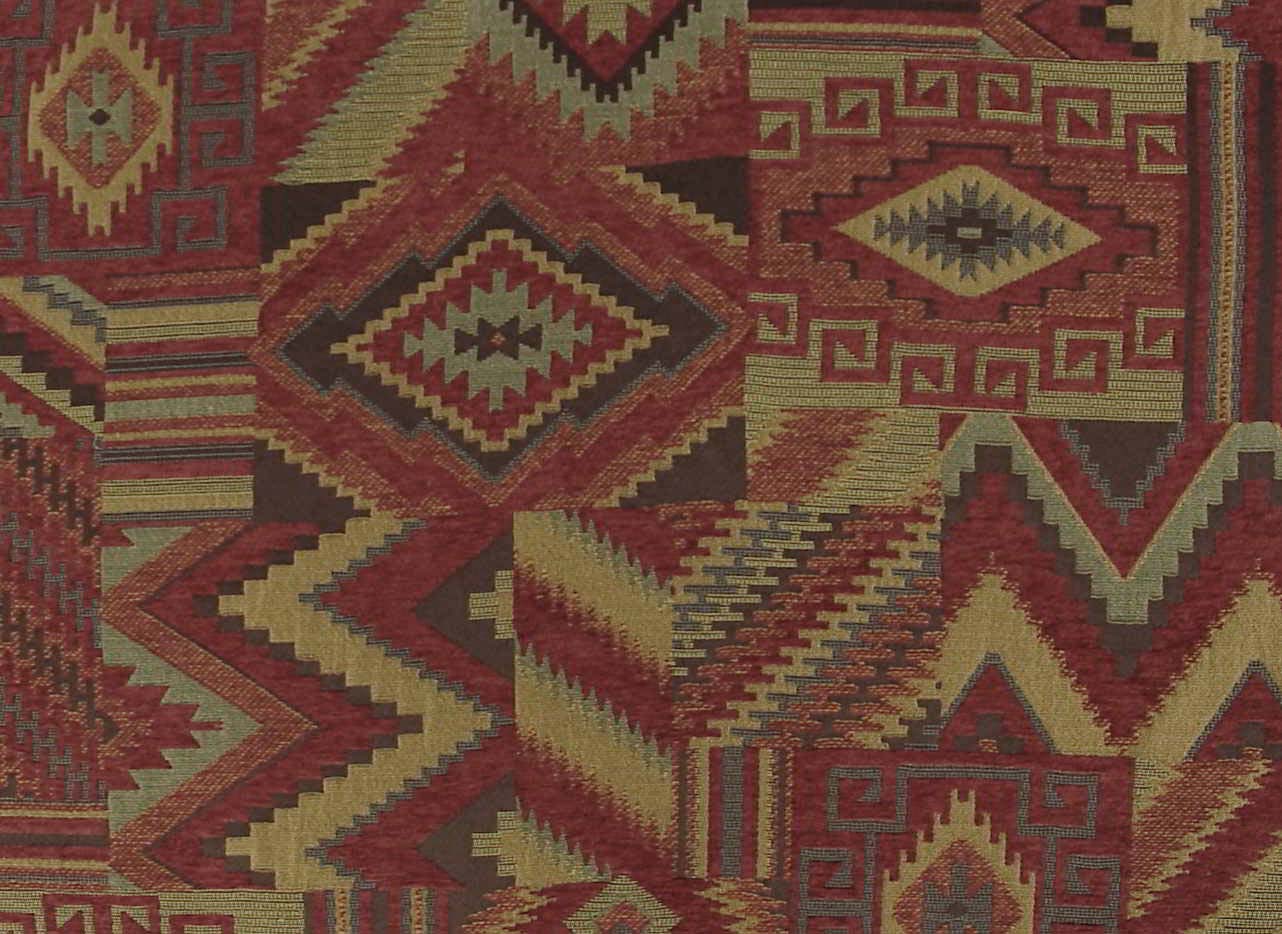
The oldest-known weavings in North America come from the Windover Archaeological Site in Florida. Dating from 4900 to 6500 B.C. and made from plant fibres, the Windover hunter-gatherers produced "finely crafted" twined and plain weave textiles.
Most people in North America made their clothing from agave plant fiber – some of it grew wild, and some of it they farmed. Richer people wore cotton clothing. Cotton came originally from the Aztec people in Mexico.
They knitted it into socks. Men wore kilts (skirts) and women wore dresses, and they both wore ankle-high leather moccasins. These cotton clothes were appropriate for the hot weather of the south-west.
Mississippians and the Cherokee made their clothes out of the inner bark of trees which they peeled off, beat it until it was flexible, and then spun and wove it into cloth like linen.
 According to Navajo tradition, they were taught to weave by two holy ones: Spider Man and Spider Woman. The legend says that Spider Man created the loom of sunshine, lightning and rain, while Spider Woman taught the Navajo how to weave it.
According to Navajo tradition, they were taught to weave by two holy ones: Spider Man and Spider Woman. The legend says that Spider Man created the loom of sunshine, lightning and rain, while Spider Woman taught the Navajo how to weave it.
The original function of Navajo weaving was to produce clothing: "shoulder robes or cloaks, traditional dresses for women, semi-tailored shirts, breechcloths, and a variety of belts, cloaks, shoulder robes, sashes, hair ties, and garters
Traditional blankets were simple in design— early Pueblo blankets prominently featured banded stripe-patterns. The main colors of early blankets were typically grey, brown, tan, white or black, which was due to the natural color of the Churro sheep. Stripes were also colored with indigo, which could be obtained from indigofera shrubs imported from Mexico on pony caravans. The Navajo favored the color red, as it’s frequent in their weaving, but it was difficult to obtain red vegetable dyes in the Southwest.
Shoes were made of skins, leather and called moccasins.
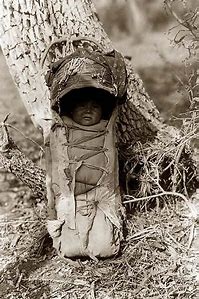
When did Europeans come to America?
Of course we know about Columbus. He came in 1492. The Vikings were in North America in Newfoundland and Vinland around 1000 A.D. but their settlements disappeared at the latest when the Greenland settlement disappeared about 1400 A.D. The location of Vinland is still unknown.
Perhaps it was in New England where wild grapes did grow. Vinland means land of grapes. Did any settlers survive, did they mix with the Indians?
Some people think there is evidence in the Algonquin language and also in stones with inscriptions tha show European influence. Genetically all American Indians have European genes, presumably existing in the original group coming from Beringia.
Where did Columbus land?
1492: La Navidad is established on the island of Hispaniola; it was destroyed by the following year.
1493: The colony of La Isabela is established on the island of Hispaniola.
1493: Columbus arrives in Puerto Rico
1496: Santo Domingo, the first European permanent settlement, is built.
1497: John Cabot reaches Newfoundland.
1498: In his third voyage, Columbus reaches Trinidad and Tobago.
1498: La Isabela is abandoned by the Spanish.
What Indians were there?
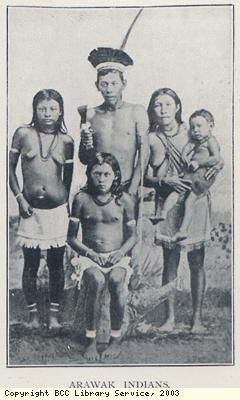
The Arawak/Taíno people.
The Arawak tribe originated in the Orinoco Delta, spreading from Venezuela to the Caribean. They traveled to Hispaniola around 1200 CE. Each society on the island was a small independent kingdom with a leader known as a cacique.
How did they interact with Indians?
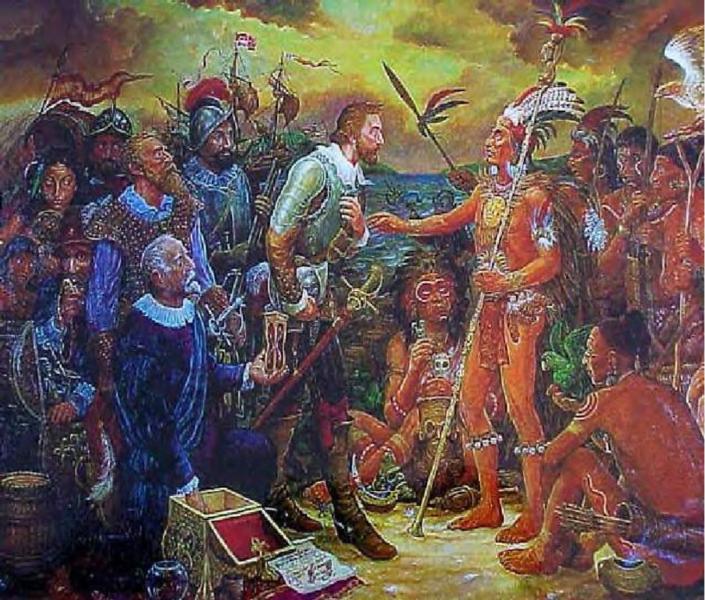
Columbus and the Tainos
Taino people were known to be friendly with the Spanish, and perhaps this friendliness was perceived as peacefulness. They traded freely with them and offered them gifts, and in exchange, they may have been momentarily spared being captured and enslaved. Legend holds that the Loconos themselves adopted the name Aruacas as a way to distinguish to the Spanish that they were a friendly group. Aruac became Arawak—the peaceful people of the Caribbean.
The Carib tribe is less friendly. The word is purported to mean “brave” and who is braver than the people who resisted the advancement of the colonizers? In the eyes of Columbus and those that came after, “brave” becomes “aggressive.” Columbus and others of his time stoked the mythology of the cannibalistic, ruthless Carib with the Spanish monarchy to obtain their approval to launch a slave trade that would fund the development of the Caribbean: In exchange for supplies and livestock to help the colonists gain their footing, Columbus would send ships of slaves drawn from the vengeful Caribs.
Why did so many Indians in the Caribean die?
Many of the Indigenous people of the Caribbean were eradicated by disease, starvation, and the hardships of the work they were made to do in the mines, as divers, and on plantations. By the middle of the 16th-century, their numbers were so low that the import of Africans as slaves was necessary to continue to colonial conquest.
But all of them did not die, and DNA has shown that most people in Puerto Rican have some Taino blood.
Where were other settlements of colonists?
Remains of Viking settlements were found in Newfoundland, Canada.
1499: João Fernandes Lavrador maps Labrador and Newfoundland
Europeans, mainly Spanish, French and English tried to establish settlements in the 16th century. All of them failed.
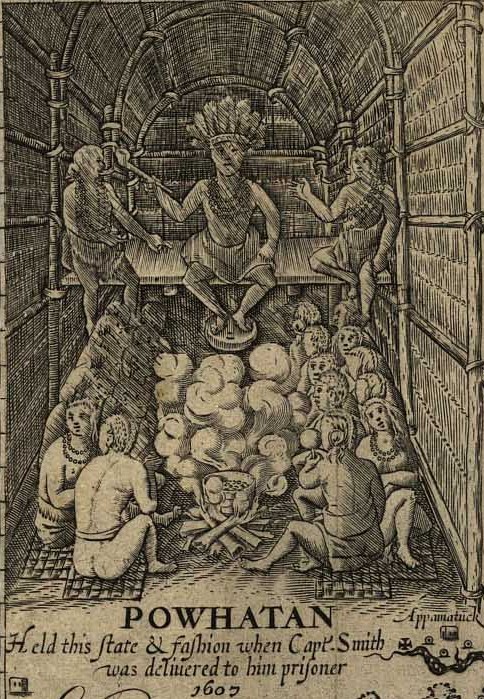
Jamestown in Virginia was founded in 1607. In this picture the chief of the local Indian tribe Powhatan had the leader of the colonists James Smith captured and held a court process against him. He was freed in the end because of the intercession of Pocahontas, Chief Powhatan’s 13-year-old daughter.
An accidental fire destroyed much of the town, and hunger, disease, and Indian attacks continued. During this time, Pocahontas often came to Jamestown as an emissary of her father, sometimes bearing gifts of food to help the hard-pressed settlers.
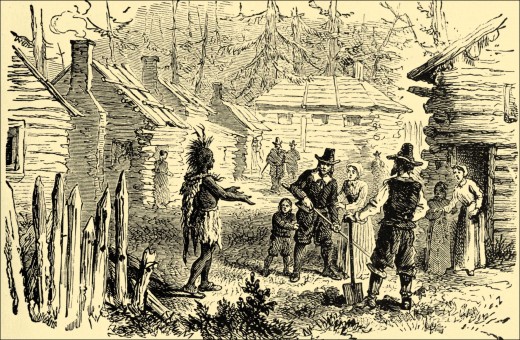
Plymouth colony in Massachusetts founded in 1620 succeeded.
Some fanous North American Indians
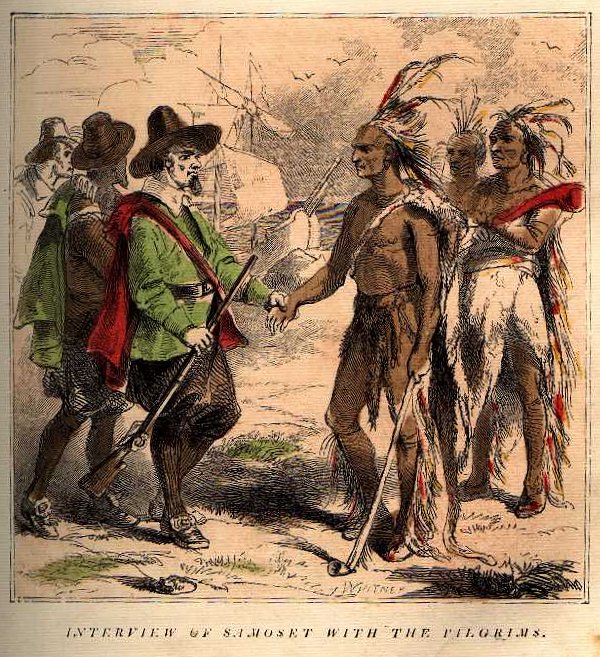
Samoset Wampanoag greets the Pilgrims
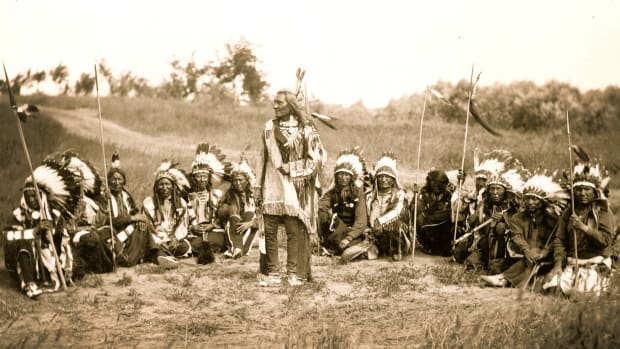
Geronimo Apache
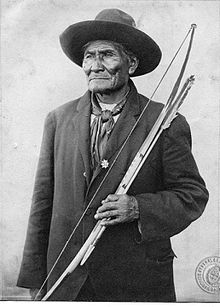
Geronimo Apache
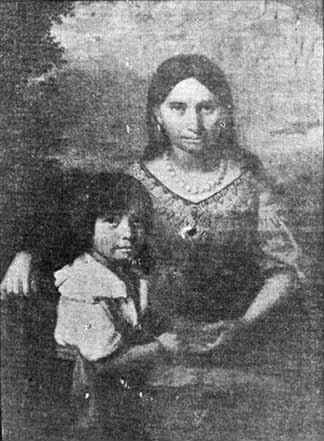
Pocahantas Algonquin
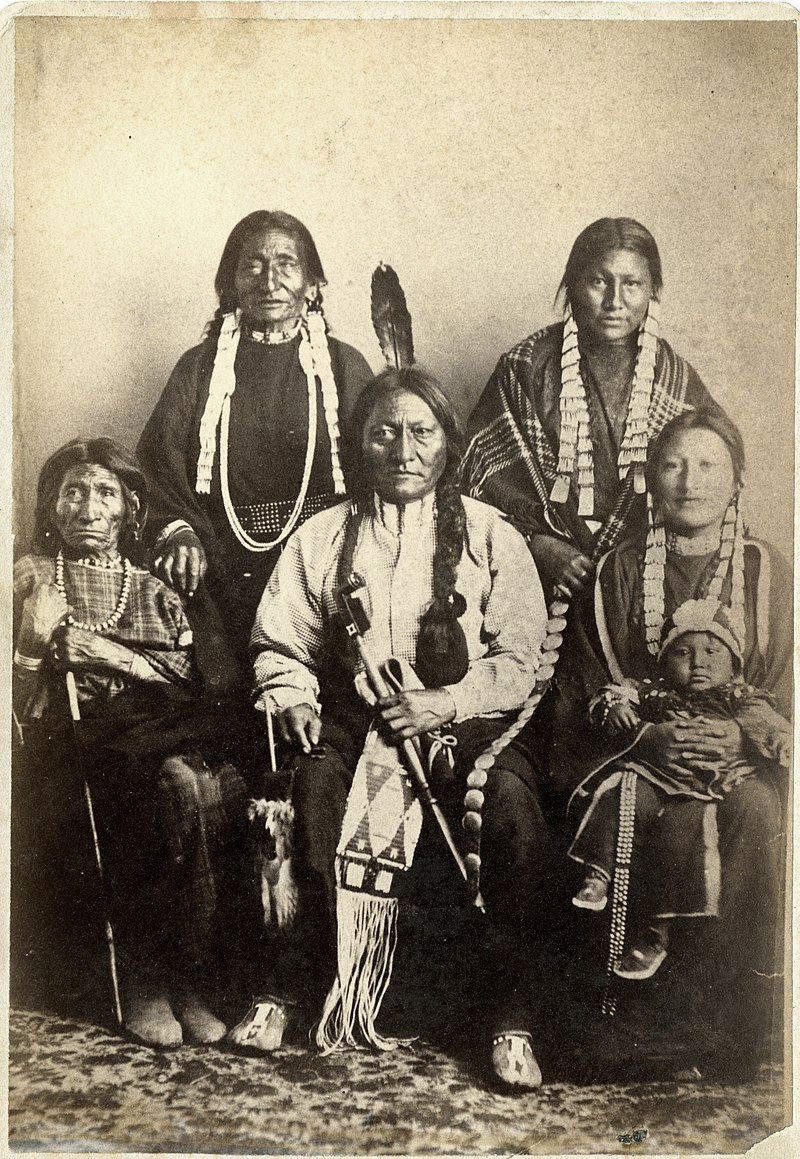
Sitting Bull and his family Dakota Sioux
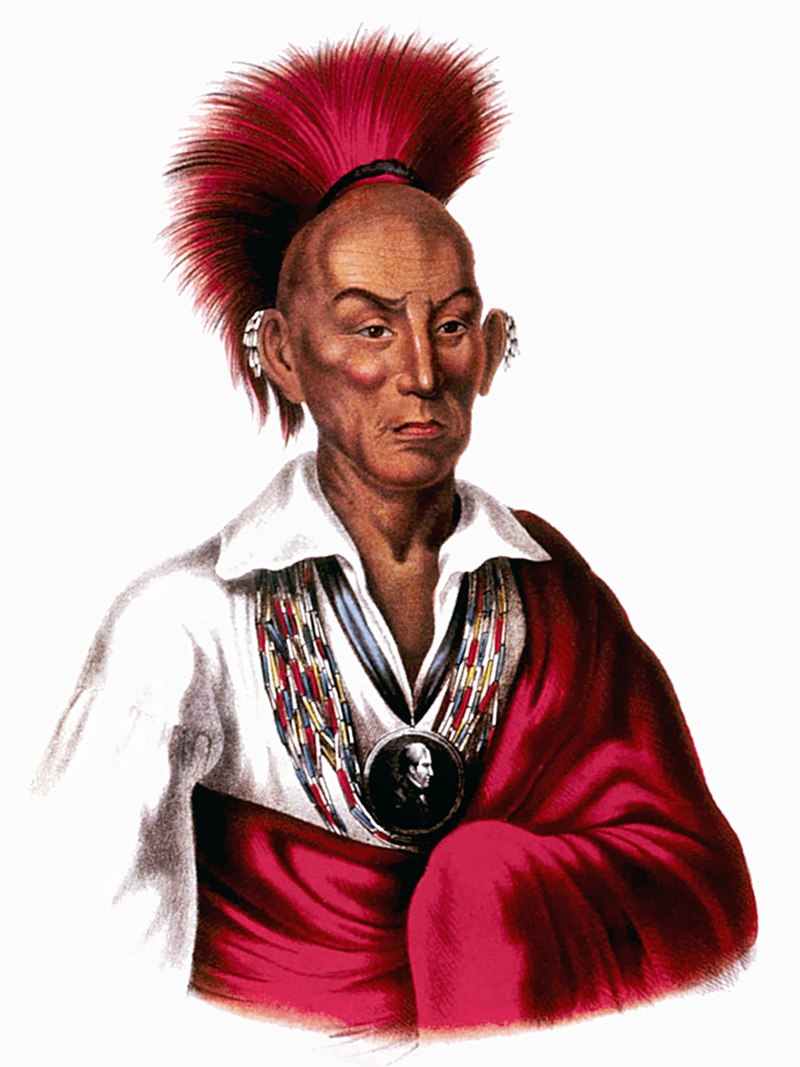
Black Hawk Sauk Chief
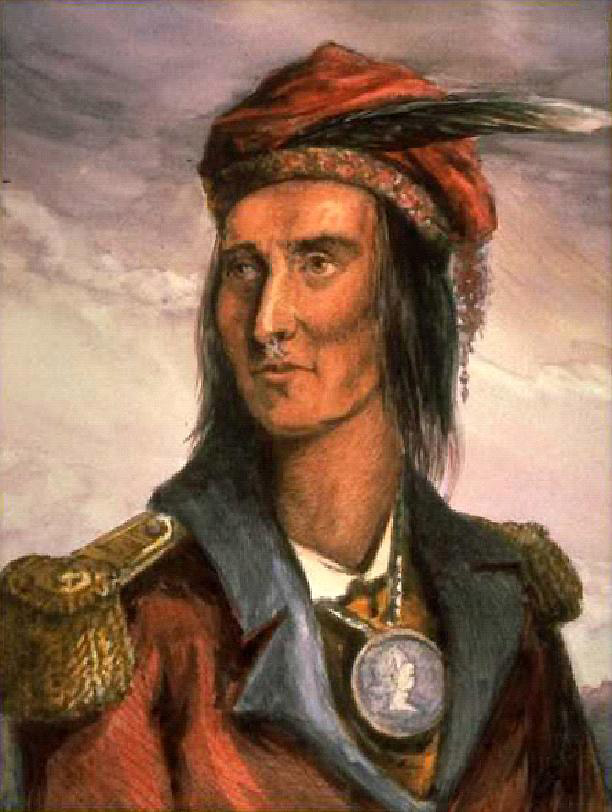
Tecumseh Shawnee
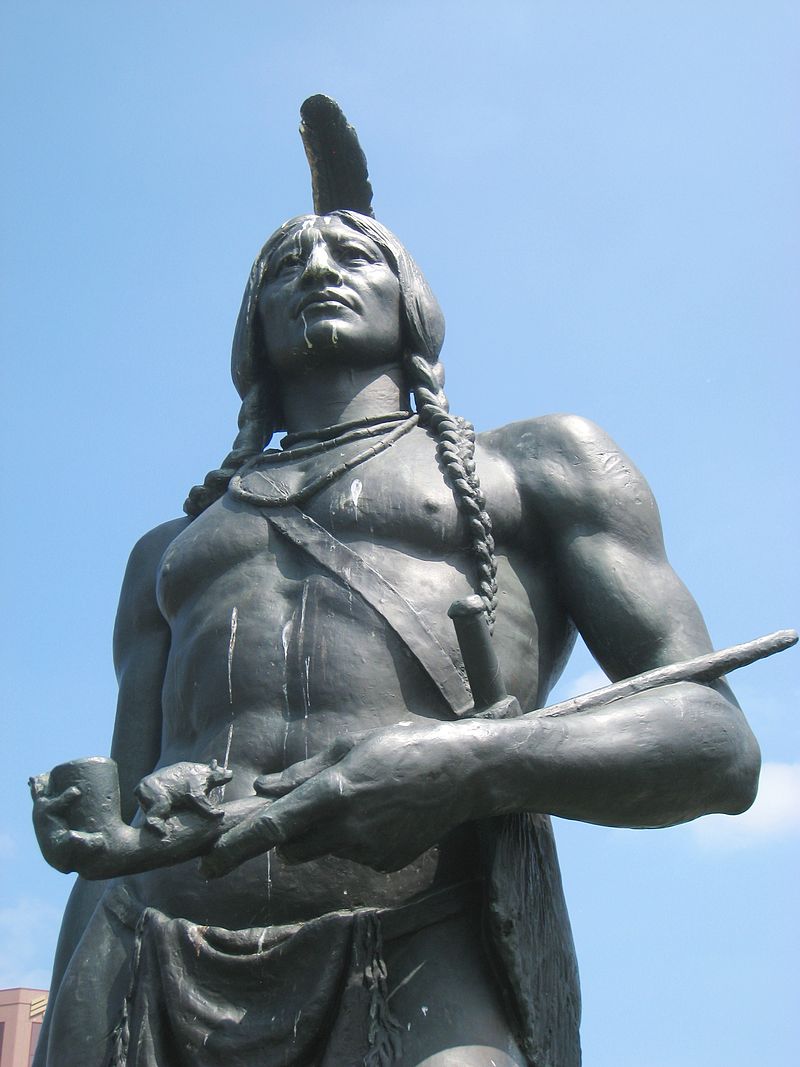
Massasoit Wampanoag
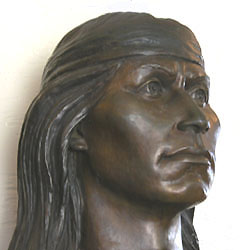
Cochise Apache
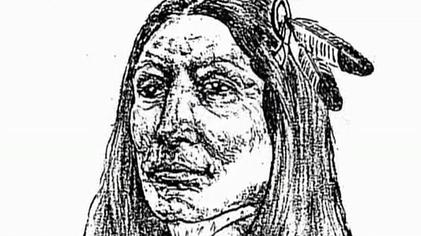
Crazy Horse Ogala Lakota
Did Indian tribes fight each other?
Indian tribes fought each other. But some tribes joined into large confederations.
What were the most famous battles between settlers and Indian wars in the USA?
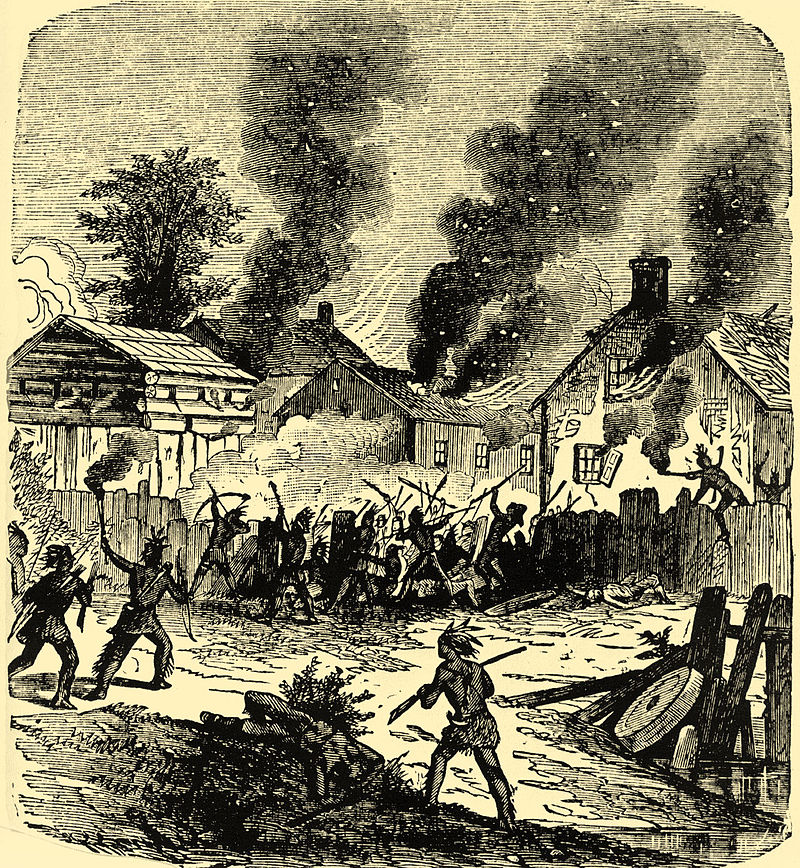
King Phillips War 1675–1678 between Indian inhabitants of New England and New England colonists and their Indian allies. The war is named for Metacomet, the Wampanoag chief who adopted the name Philip. The war continued until the signing of the Treaty of Casco Bay in April 1678. the colonists lost 800 persons, the Indians about 3000. More than half of New England's towns were attacked by Indians. King Philip's War began the development of an independent American identity separate from Britain.
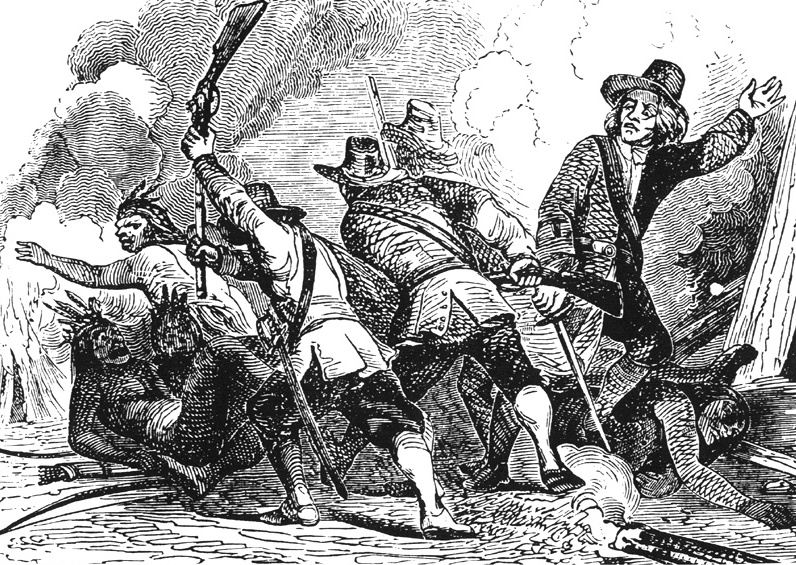
Pequot war 1636–37 by the Pequot people against English settlers from the Massachusetts Bay, Connecticut, and Saybrook colonies and their Native American allies (including the Narragansett and Mohegan) that eliminated the Pequot as an impediment to English colonization of southern New England.
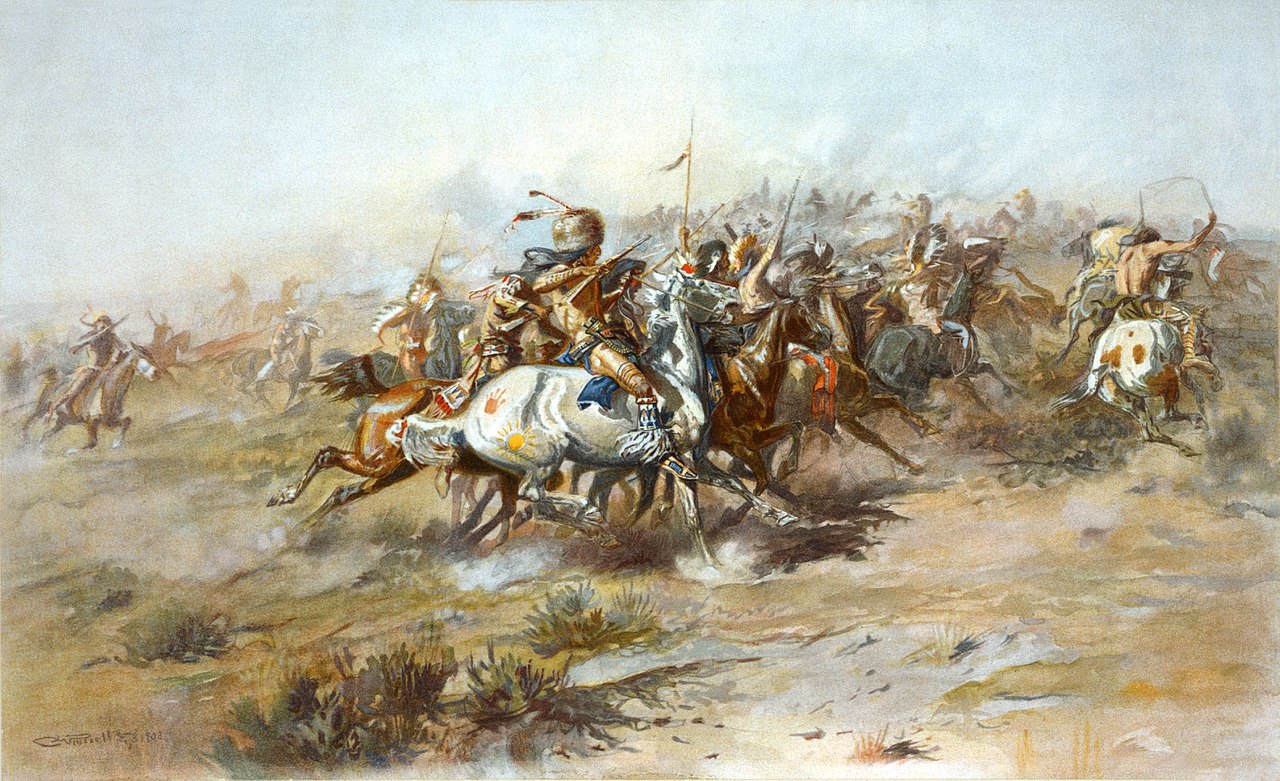
Custer's Last Stand, was an armed engagement between combined forces of the Lakota, Northern Cheyenne, and Arapaho tribes and the 7th Cavalry Regiment of the United States Army. The battle, which resulted in the defeat of U.S. forces, was the most significant action of the Great Sioux War of 1876. It took place on June 25–26, 1876, along the Little Bighorn River in the Crow Indian Reservation in southeastern Montana Territory.
Wounded Knee Dezember 1890 auf dem Gebiet der heutigen Ortschaft Wounded Knee in der Pine Ridge Reservation in South Dakota statt. Dabei wurden 300 wehrlose Angehörige verschiedener Sioux-Indianerstämme von Angehörigen des 7. US-Kavallerie-Regiments ermordet. Das Massaker brach den Widerstand der indigenen Bevölkerung in den Dakotas.
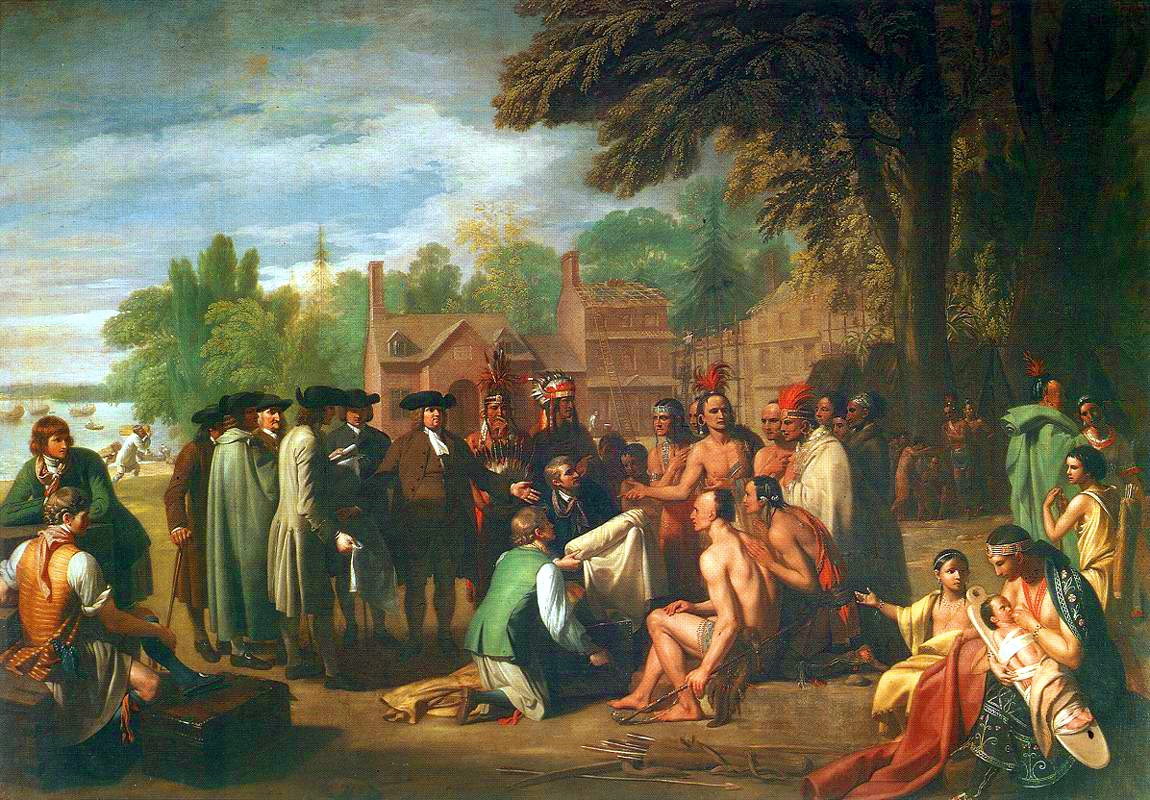
Many treaties were made between European settlers and Indians to try to end wars and Indian attacks on settlers, but all of them were broken by European settlers who wanted more land.
Where were the most advanced Indian civilizations in North America?
Pueblos and
Chippewa
Did North American Indians have contact with Incas and Aztecs?
Pueblos traded with Aztecs. Since objects created in Mexico have been found in most of the South of USA there must have been quite a bit of trade.
Do Indians live in the USA today?
Yes, there are about ? million people who officially belong to Indian tribes.
Where do they live?
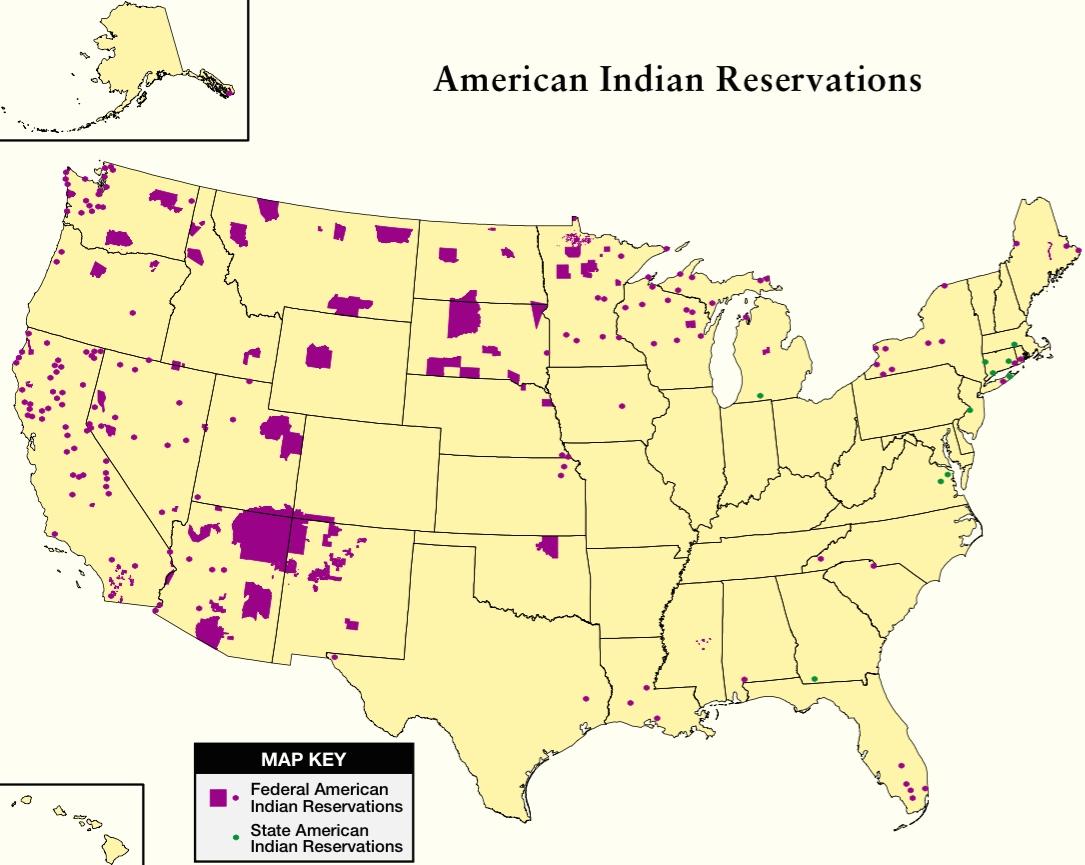
There are many Indian reservations in the West. In the East there are also areas considered officially Indian owned lands.
Do you think it is good that Indians have specifically designated areas where they may live and that they govern?
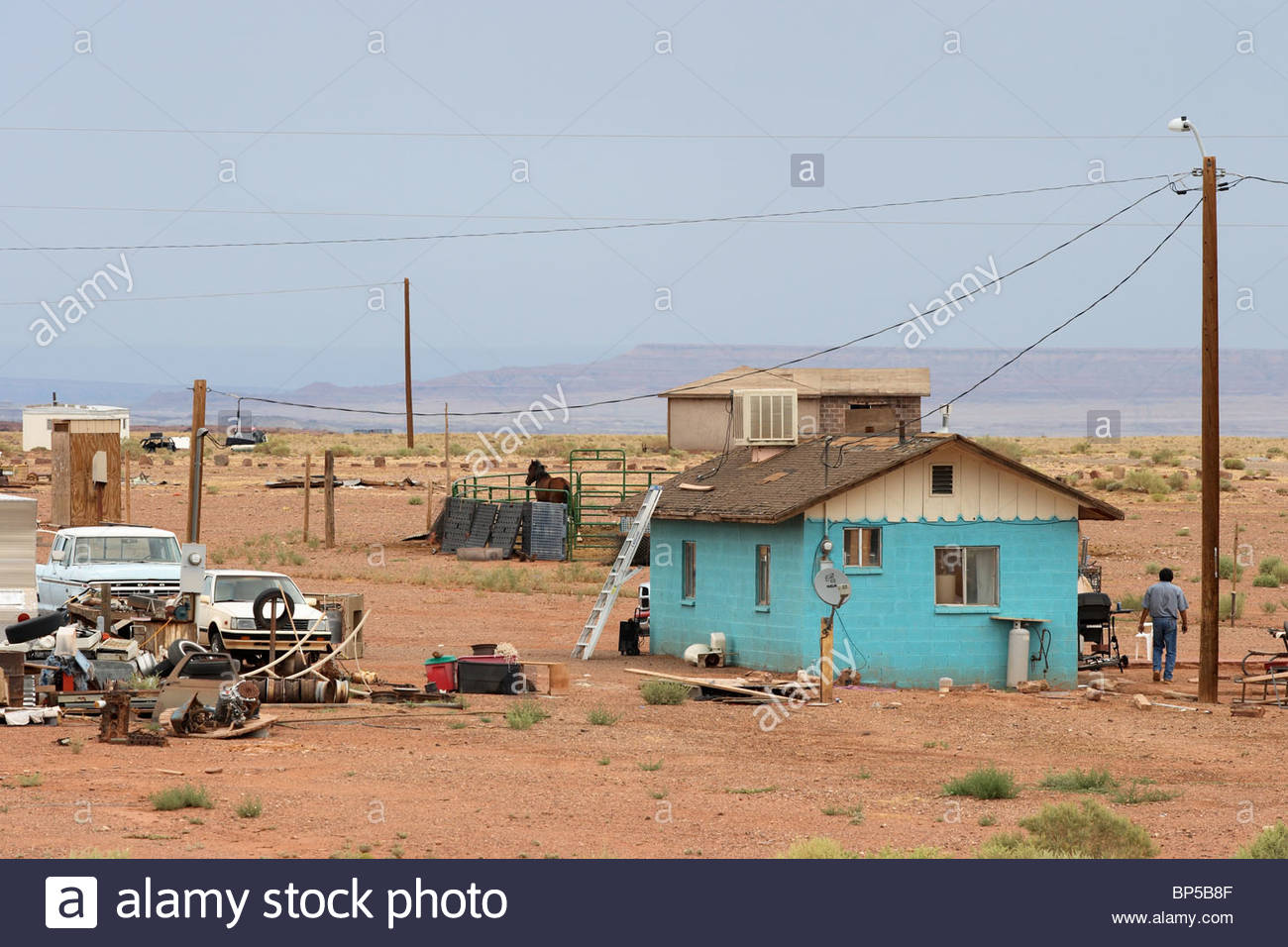
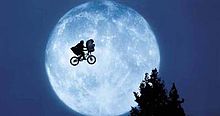
UFOS AND EXTRA-TERRESTIALS
UFO means Unidentified Flying Object. Unbekanntes Flugobjekt.
sometimes they are called flying saucers. fliegende Untertasse.
ET means ExtraTerrestial. ausserirdisch.
ET Trailer
Star Wars Trailers all of them 1977 to 2018
.jpg)
This is a picture of what artists think an UFO looks like.

This is a real photo of a possible real UFO.
Do you think UFOs really exist or are they just something you see in films or read about in science fiction?
There is no 100% certainty that UFOs did not originate on earth. The is no evidence that they were created by Extraterrestials, or that Extraterrestials could be travelling in them. However, it is not impossible. Research continues to discover whether there really are space ships and extraterrestials from other planets.
 This is a photos of unidentified flying objects.
This is a photos of unidentified flying objects.
Why don’t astronomers see UFOs?
They do. In 1977, 1,356 scientists answered a questionaire. Of these 62 astronomers – 4.6 percent – reported seeing ufos. Most UFos can be identified eventually, but 5% cannot. They are UFOs.
Astronomers who saw UFOs saw them at night. Half of all astronomers thought they should be studied.
UFOs have been observed through telescopes in the 1700s and 1800s.

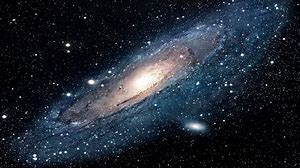
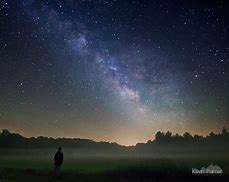
The Milky Way
Our Solar system is in the Milky way.
Have you seen the Milky Way?
How big is the Milky Way Galaxy?
The Milky Way Galaxy is our home in the existing Universe, it is a barred spiral galaxy 100,000‐120,000 light-years in diameter containing 200‐400 billion stars and at least as many planets including our solar system. The galactic center is named Sagittarius A and its believed to hold a super-massive black hole with an estimated mass of 4.1‐4.5 million times the mass of our Sun.
How old is the Milky Way Galaxy?
Milky Way Galaxy is approximately 13.7 billion years old, almost as the Universe itself. The age is determined by taking the age of the stars in the Milky Way.
How many stars are in the Milky Way Galaxy?
The Milky Way contains at least 100 billion stars and may have up to 400 billion stars. The exact number is not known.
If Ufos don't come from the Solar System where do they come from?
They would possibly come from planets in other solar systems. These planets are called Exoplanets.
How many exoplanets are there?
As of 1 May 2020, there are 4,260 confirmed exoplanets in 3,149 systems, with 696 systems having more than one planet.
However, there are thousands of other possible exoplanet detections that require further observations in order to say for sure whether or not the exoplanet is real.

 Various exoplanets which could have life on them.
Various exoplanets which could have life on them.
How many exoplanets could have life on them?
New ones are being discovered all the time.
Do you think there are living beings like people living on any of these planets?
Have aliens visited earth?
About 5 percent of all UFO sightings cannot be easily explained by weather or human technology. A physicist argues that there’s compelling evidence to justify serious scientific study and that the skeptics should step aside – for the sake of humanity.
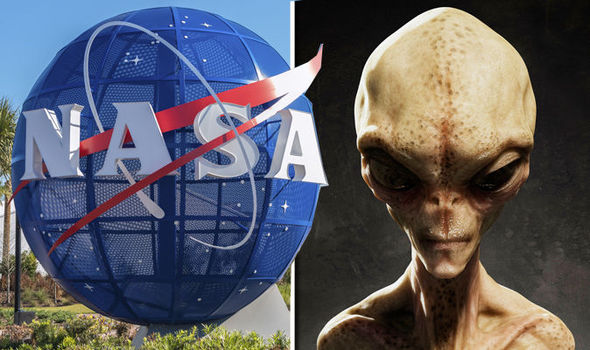 These are pictures of how aliens might look.
These are pictures of how aliens might look.
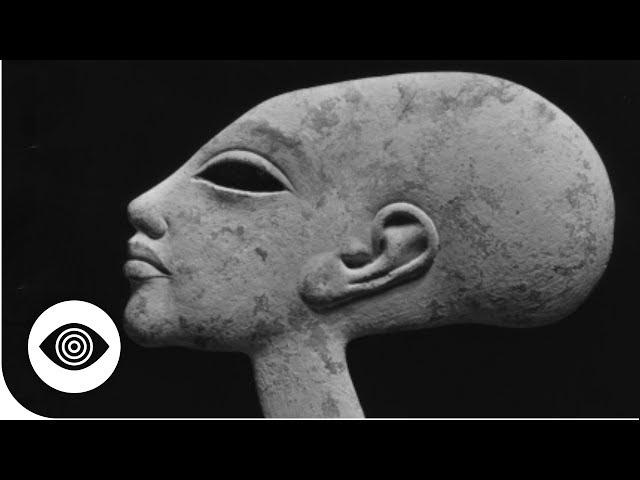
A photo from Roswell New Mexico in the USA is probably a hoax.
If there are ETs do you think they are friendly or dangerous?
There has never been an attack on earth by aliens from other planets.
This does not mean they are friendly if they exist.
Why would aliens want to visit earth?
Some people think Aliens would save humanity if things got bad.
ETs may step in and save Planet Earth, but they wouldn't care about humans.
UFOs have a long history of appearing just after catastrophes or wars. They could be keeping their eye on the prize we call Earth.
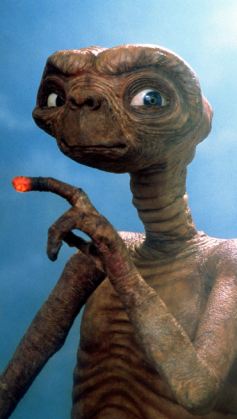
Why do UFPs and ETs often look quite similar even though many different people have described them or drawn them at different times, places?
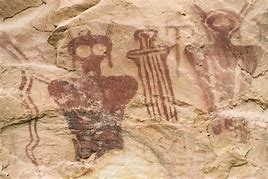 This is an ancient drawing of an alien.
This is an ancient drawing of an alien.
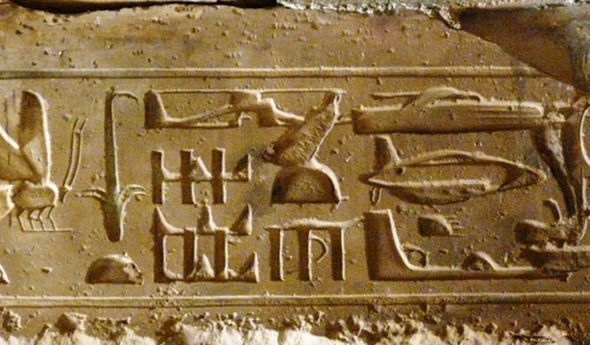 This is an Egyptian Hieroglyphic of an Ufo.
This is an Egyptian Hieroglyphic of an Ufo.
Is the government hiding facts about alien visits to earth?
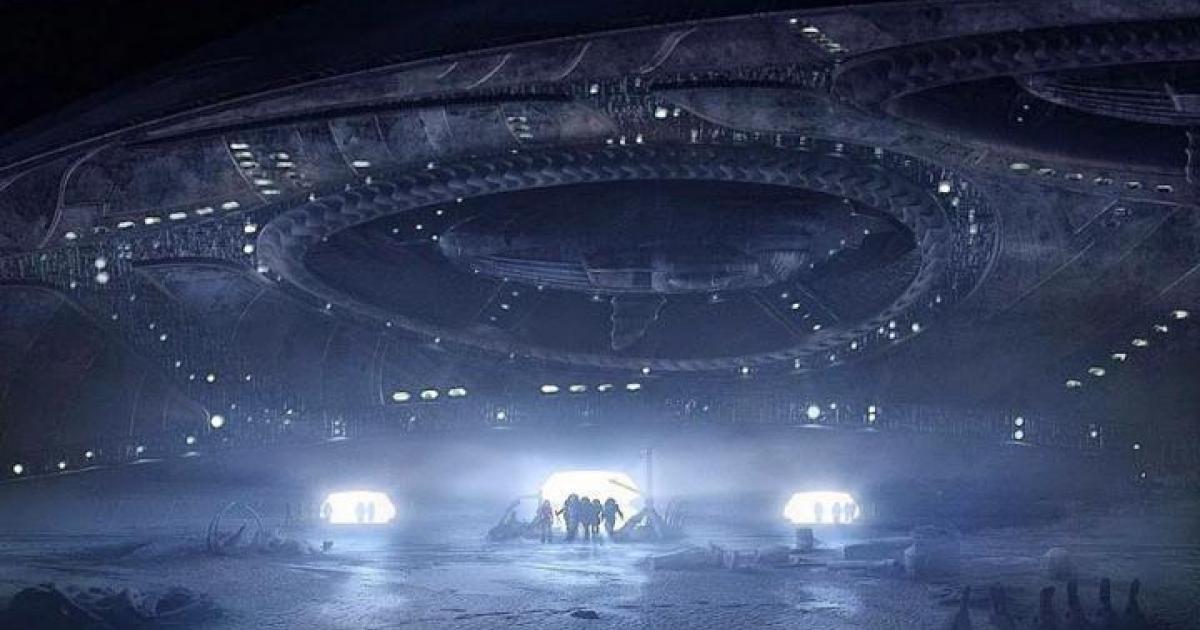
There are many conspiracy theories about UFOs. A conspriacy theory means people believe something is real that cannot be proven.
Some people believe UFOs have landed on earth.They think the government of the USA is hiding information from them.
Most of the sightings have been studied by NASA.
NASA stands for The National Aeronautics and Space Administration and is an agency of the United States Federal Government. They study everything having to do with space including UFOs. Until recently they insisted there are no UFOs and no ETs and these are no danger to the world.
This has changed. Scientists think it is possible that there are Ufos and ETs.
The nuclear physicist Enrico Fermi was famous for posing thought-provoking questions. In 1950, at Los Alamos National Laboratory after discussing UFOs over lunch, Fermi asked, “Where is everybody?” He estimated there were about 300 billion stars in the galaxy, many of them billions of years older than the sun, with a large percentage of them likely to host habitable planets. Even if intelligent life developed on a very small percentage of these planets, then there should be a number of intelligent civilizations in the galaxy. Depending on the assumptions, one should expect anywhere from tens to tens of thousands of civilizations.
With our rockets for space travel, it would take between 5 and 50 million years for a civilization like ours to colonize our Milky Way galaxy. Since this should have happened several times already in the history of our galaxy, where is the evidence of these civilizations? If there is no evidence, how can that be? this is the Fermi Paradox.
Carl Sagan says, the problem is that there has been no single well-documented UFO encounter that could be the smoking gun. Even worse is that many governments around the world have hidden information about such encounters.
Is there Evidence from government and military officers who have seen Ufos?
Yes.
Some of the most convincing observations have come from government officials. Last year, CEFAA released footage of a UFO taken with a helicopter-mounted Wescam infrared camera.
How could a space ship with ETs ever get to earth since they come from so far away?

What is a portal? And could they be used to travel through space?
A portal is the entrance to a worm hole. It can be shown that they exist.
A NASA-sponsored researcher has developed a way for spacecraft to hunt down hidden magnetic portals in the vicinity of Earth. These portals link the magnetic field of our planet to that of the sun.The existence of portals would go a long way in explaining the erratic and very short duration of many UFO sightings. Could it be possible that UFOs are only seen as they "uncloak" just prior to entering or exiting a portal.
Since we know that portals exist between planet earth and the sun it is likely that portals would exist between galaxies. This would explain why we have not found anybody living in our immediate neighborhood. Maybe there is an abundance of life in the universe but not in our Milky Way. It could be they are traversing the galaxies using these portals.
Wormholes
You cannot see a worm hole.
But it could explain the vast distances intelligent life would have to travel to visit earth. This means we not only search our galaxy for other planets, but also the whole universe.
Floor Plan
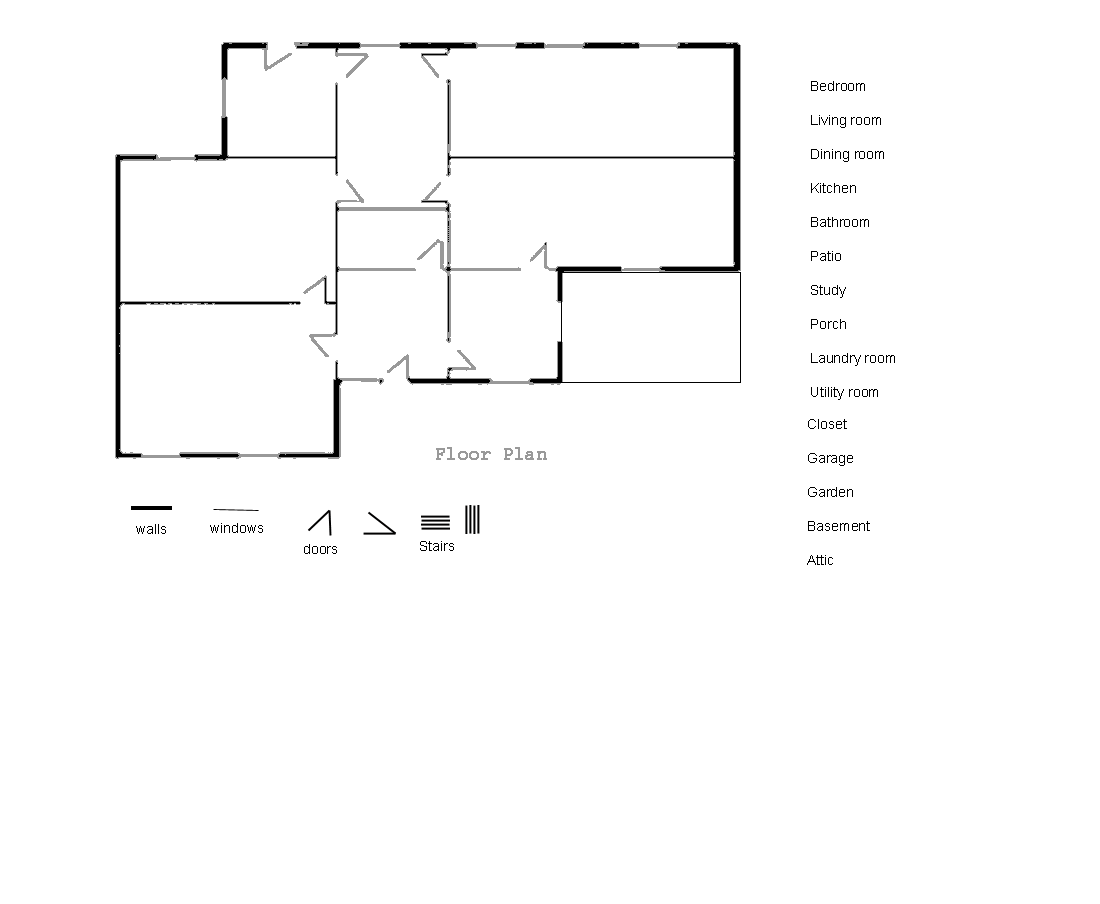
THE GAULS CA. 50 B.C.
This time I will start with questions, each followed by images if I have any. The written answers to the questions will come at the end. So we will read the question and then look at the pictures and discuss the answer to the question. After that you can look at the written answers if you want to.
QUESTIONS
4. 4. Where was Gaul?
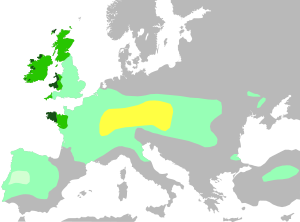
2.Who were the people who lived there? What language did they speak?
They belonged to the tribes of Celtics and spoke a celtic language.
3. 3. What did these people wear?
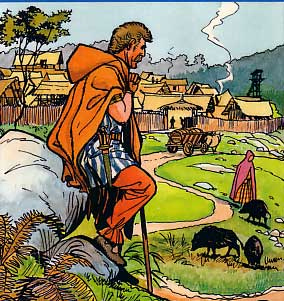
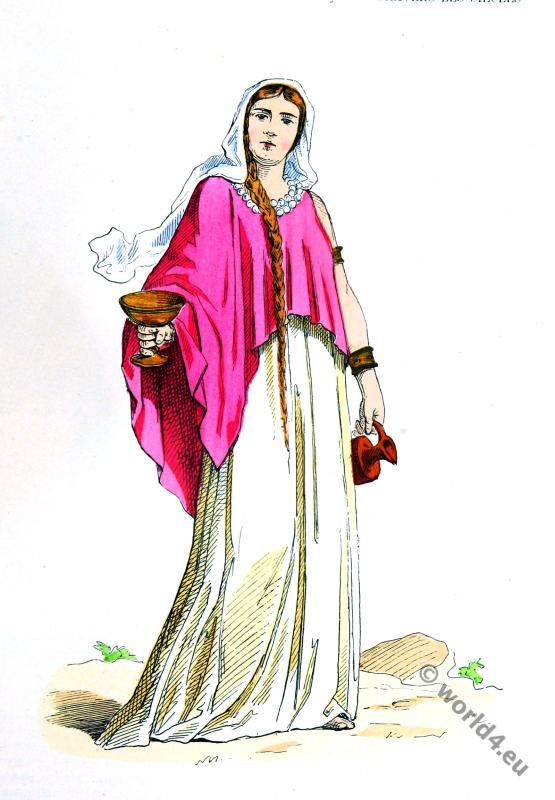
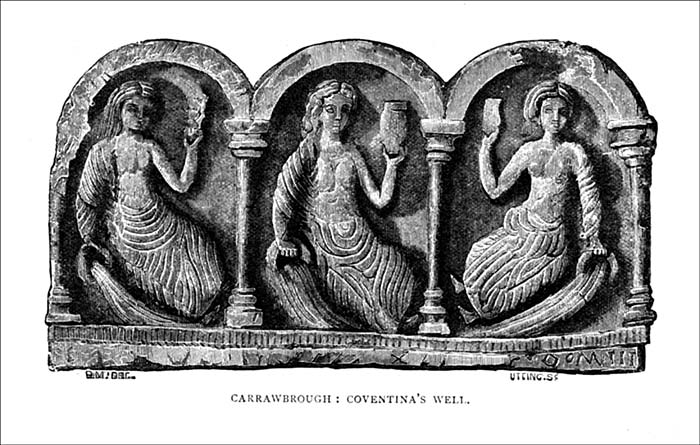
4. What did they eat?
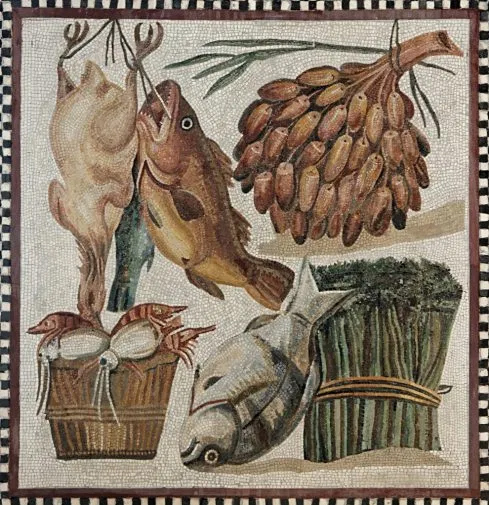
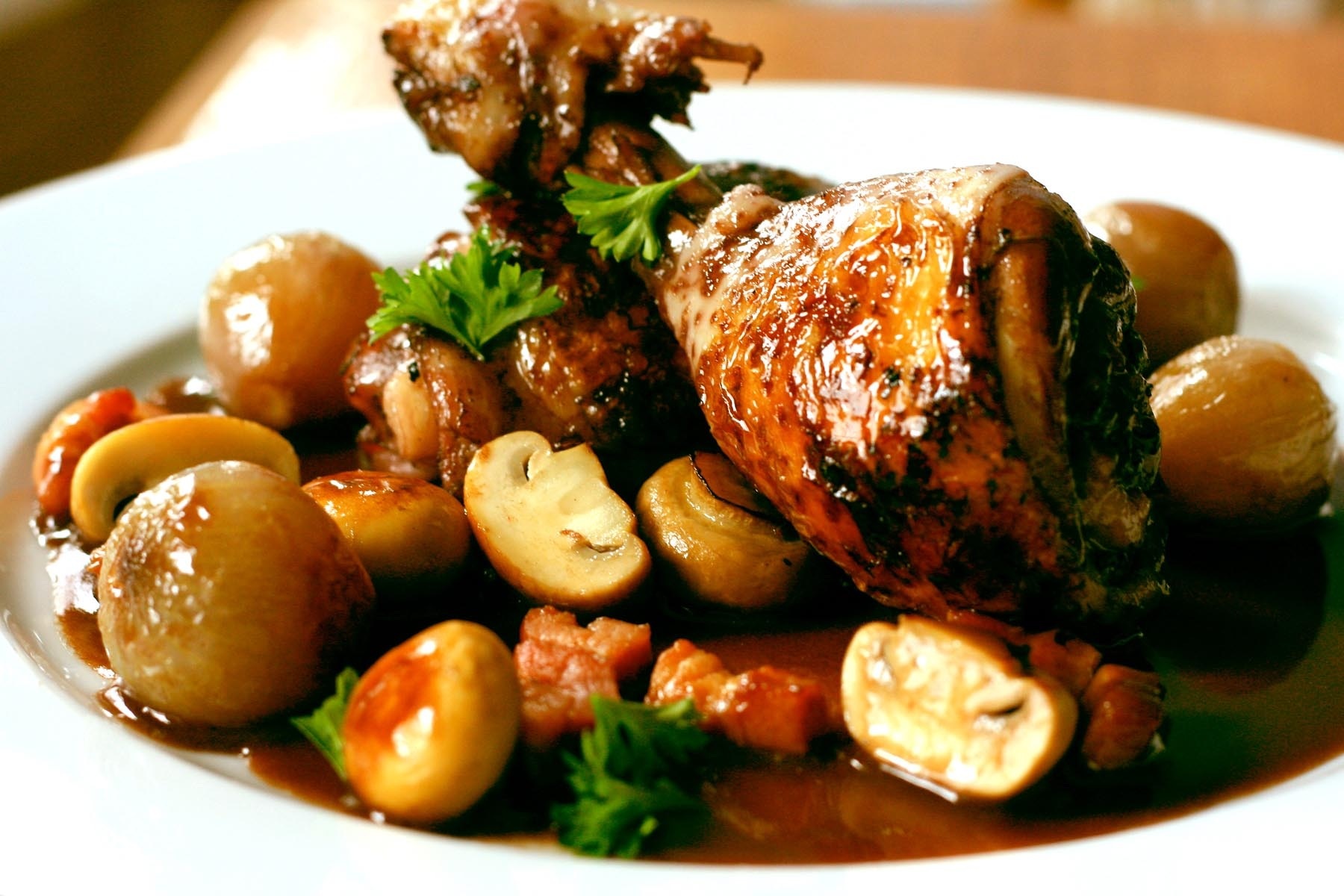
5. How did they live?
Gauls were farmers and craftspeople.

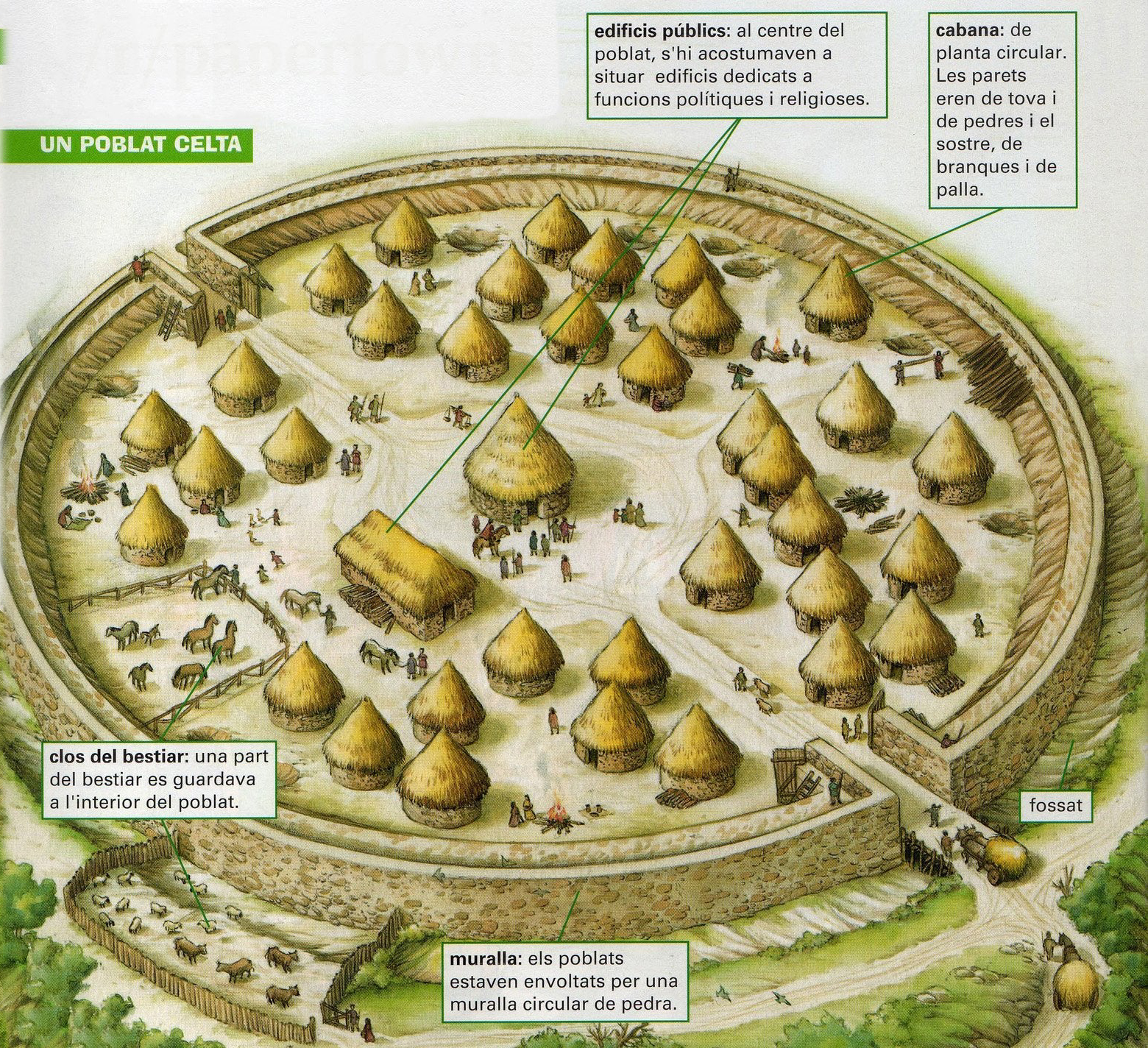
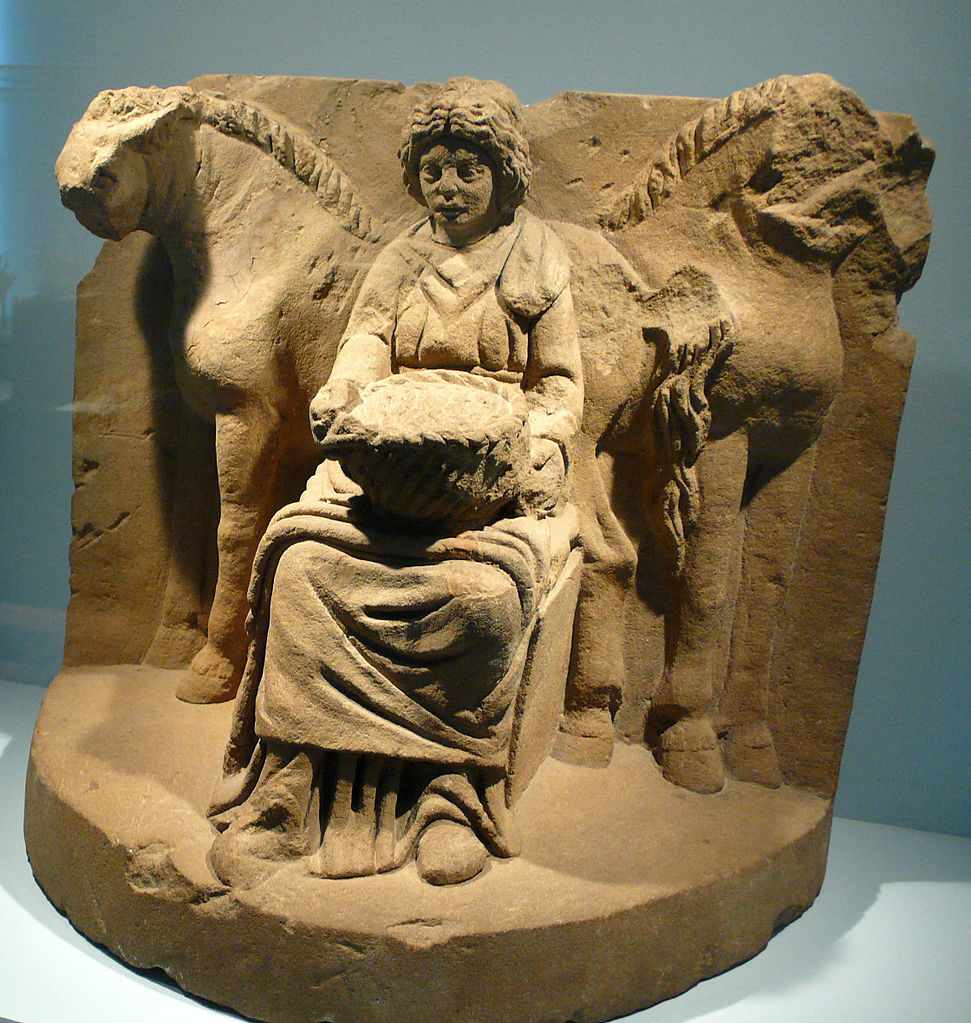
6. What was their religion like?
Druids were important for their religion. There were men and women druids.
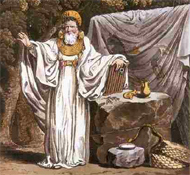
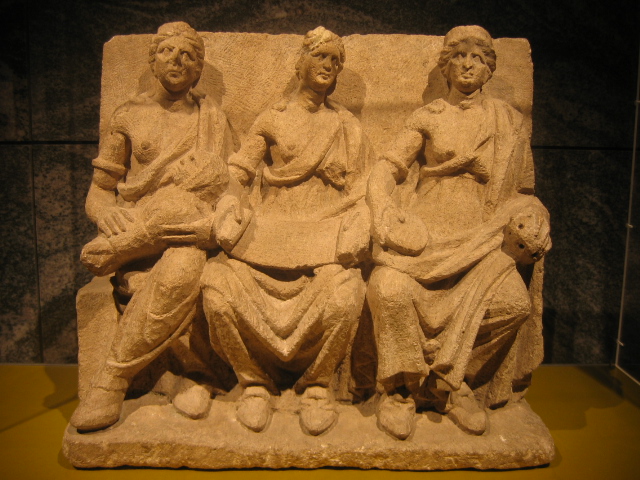
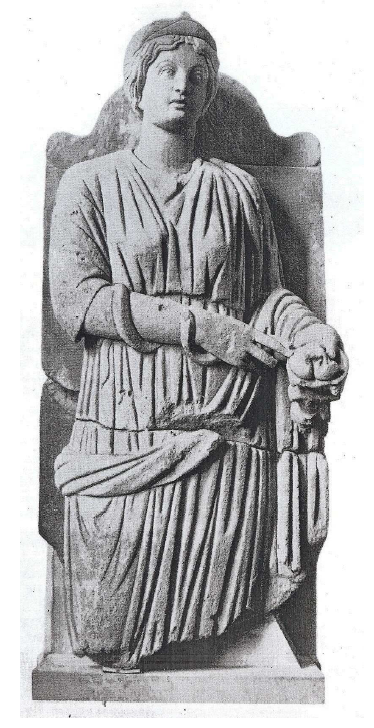
7. When did the Romans conquer them?
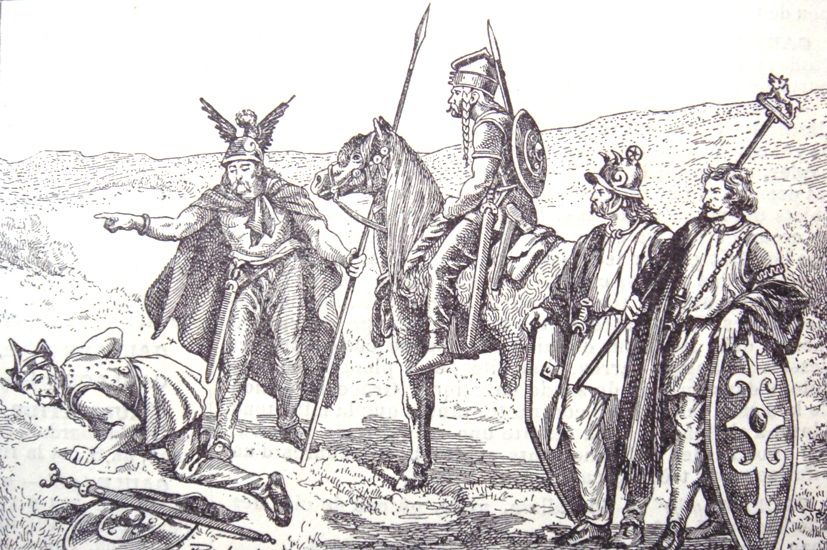
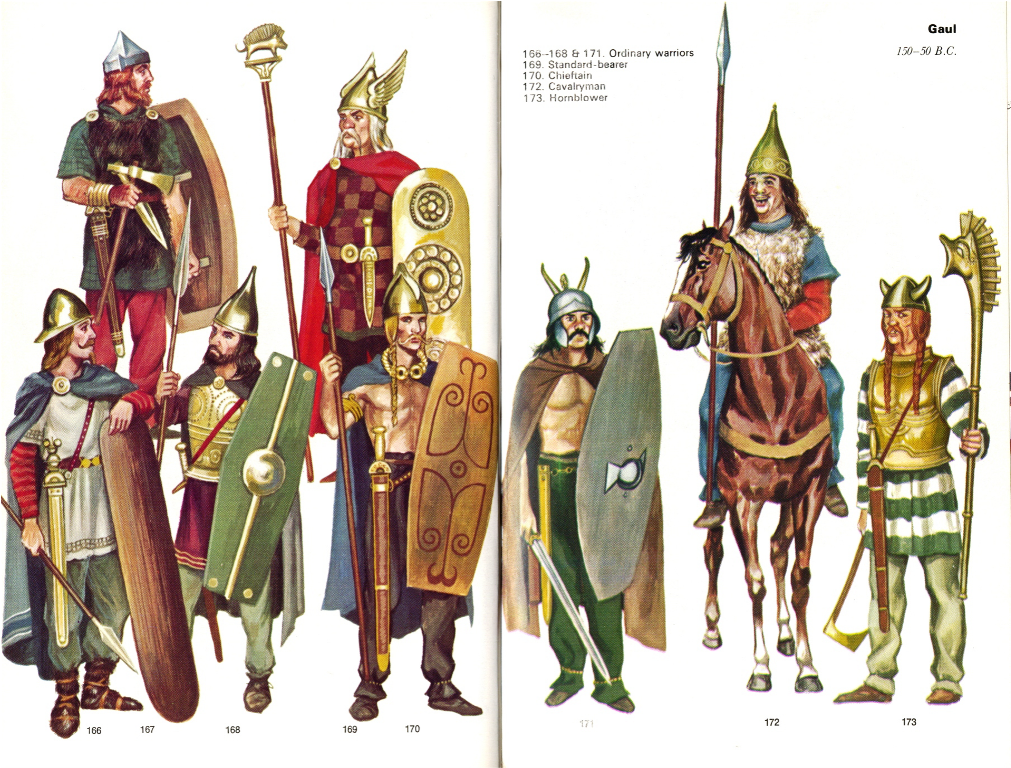
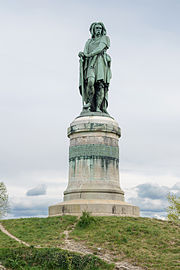
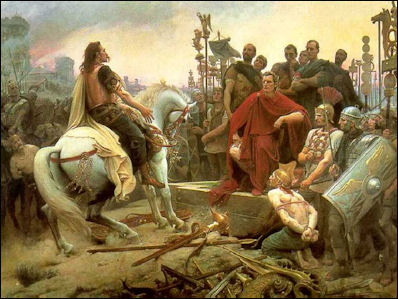
8. How did the Romans rule over them and control them?
They killed them, enslaved them, and terrified them into obedience, they sent Roman settlers to Gaul so the Gauls would be separated.
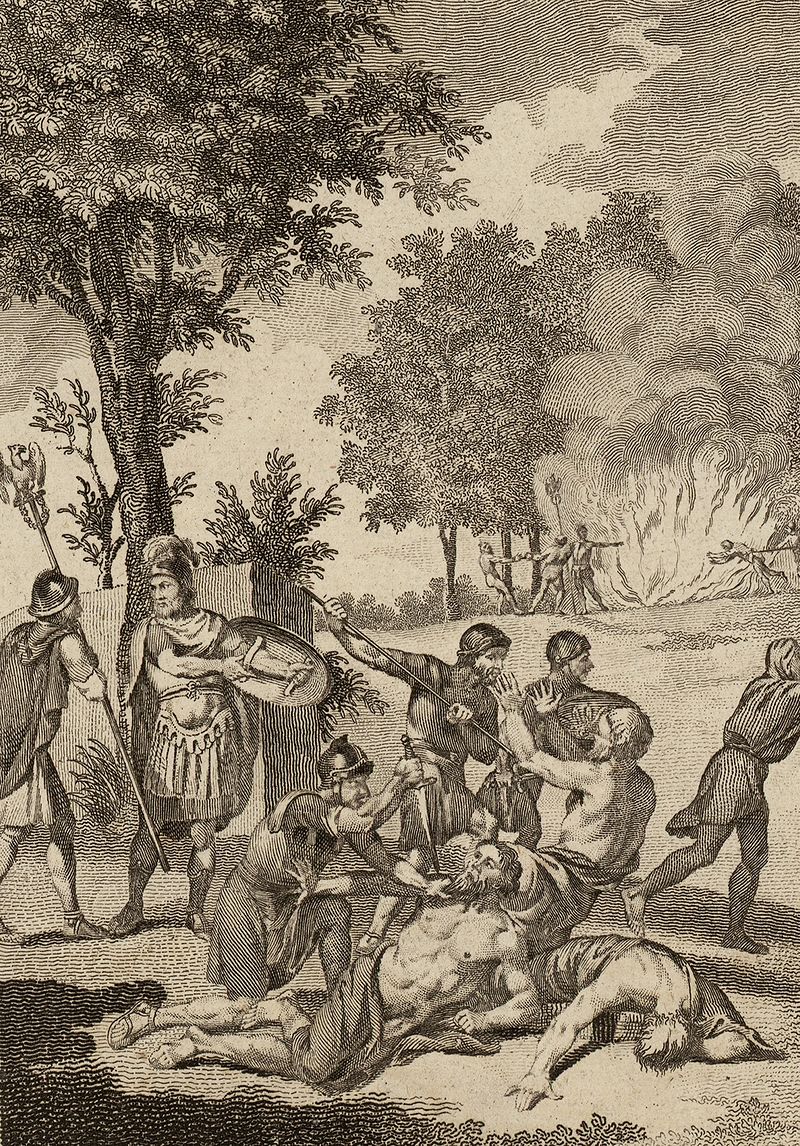
9. Were there upsrisings against the Romans?
At first there were uprisings which were beaten down.
40. How did things change for these people after the Romans came?
44. Why did Caeser want to conquer Gaul and how could he win?
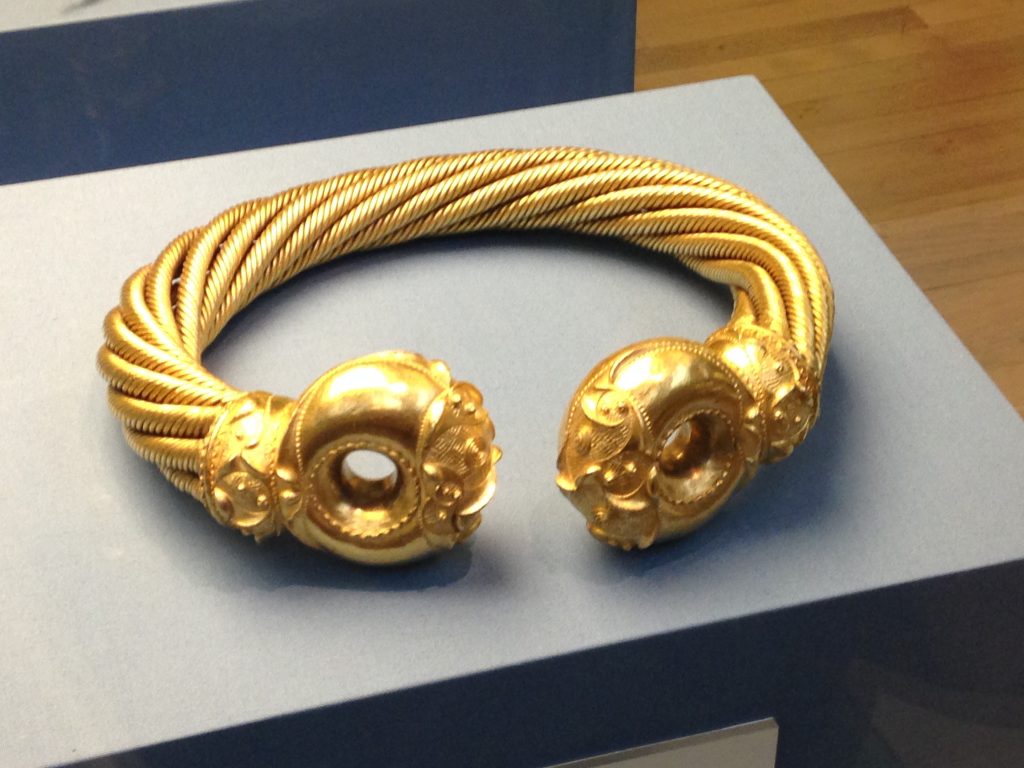
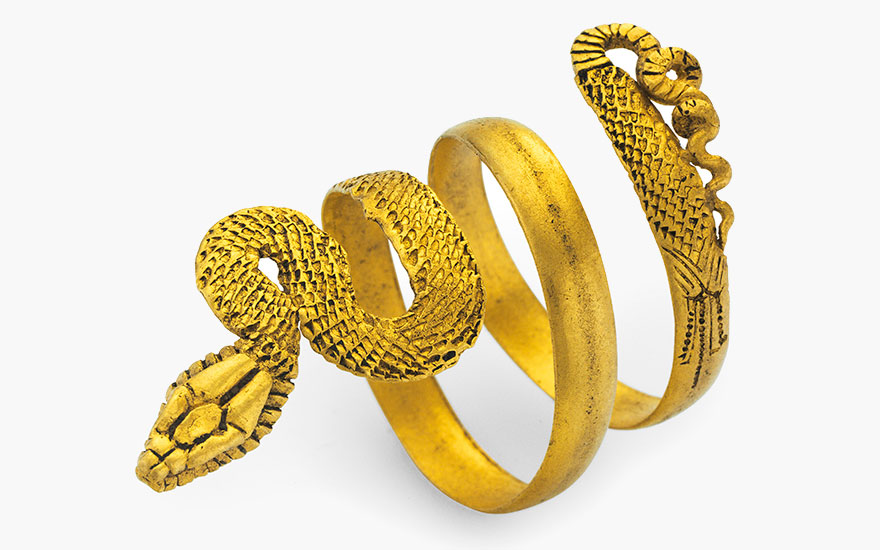
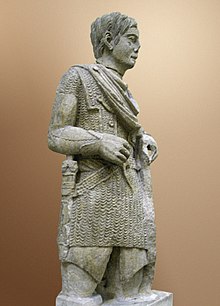
42. Aside from the magic drink, is the story of Asterix and Obelix possible?
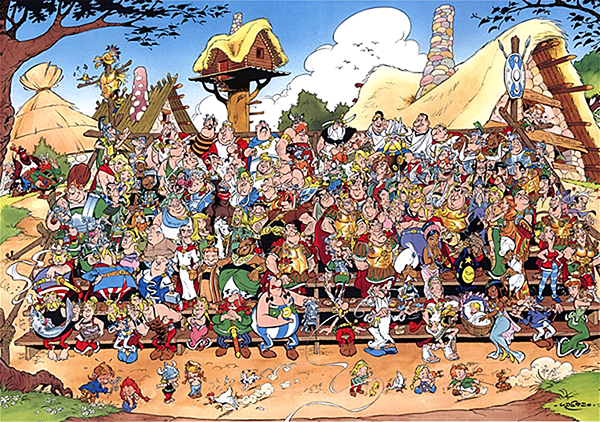
ANSWERS
4. look at the map
2. The people belonged to the Celtic tribes. The Celts at one time lived in an area of Europe which reached from Turkey to Ireland and from France to Southern Germany. Presumably most middle European people including Germans are partly Celtic.
They spoke Celtic. This language has mostly disappeared. It does exist in the Irish language Gaelic and in Welsch and Scottish which are almost no longer spoken. Modern French has some celtic
influence.
3. They invented trousers and chain mail.
4. Gauls hunted and ate wild boars? But it was rare when the Romans encountered the Gauls. They preferred the domesticated pork over its wild relative, the boar. The swine of the Gauls actually were somewhat infamous: They were a lot bigger than the pigs the Romans were used to, they left such a strong impression, that the Romans imported the animals but also deemed them dangerous. The Gauls also ate beef, poultry, fish, seafood, and grains. Like most European tribes of this time, they were farmers – although they did start out as hunters. They drank wine.
5. They were farmers and craftsmen. They invented wooden barrels and soap
Women druids enjoyed a high repute among the Romans.
On the lead Curse tablet from Larzac (c. 400 AD), which with over 4000 letters is the longest known text in the Gaulish language, communities of female magic users are named, containing "mothers" (matīr) and "daughters" (duxtīr), perhaps teachers and initiates respectively.[35]
6. Important in Gallic religion is the practice of the Druids. There is no certainty concerning their origin, but it is clear that they guarded the secrets of their order and held sway over the people of Gaul. they determined questions of war and peace, and thereby held an high political status. In addition, the Druids made sure ordinary Gauls practiced the religion and were in charge of educating the aristocracy. They also practiced a form of excommunication from the assembly of worshippers, which in ancient Gaul meant a separation from society as well. Thus the Druids were an important part of Gallic society.
Gaius Julius Caesar was fascinated with the Druids. He wrote that they were scientists, theologians, and philosophers, and acquired knowledge that was extraordinary. According to experts in Caesar's writings, the great Roman leader knew about the female Druids.
7.58 B.C. to 54 B.C.
The Gallic Wars
Julius Caesar's campaigns in Gaul (58-54 BC) are collectively termed the Gallic Wars. In 58 BC, Gallic agitation against the Suevi, a German tribe that had recently conquered territory in Gaul, and the threat of invasion by the Helvetii, a Celtic tribe from the area that is now Switzerland, gave Caesar a pretext to advance his career through war. Lack of cavalry support almost caused Caesar's defeat by the Helvetii at Bibracte, but his legions rallied and forced the Helvetii to withdraw (58). In the same year Caesar's army defeated and killed the Suevi's leader Ariovistus in Alsace after a hard campaign.
In 57, Caesar successfully met the attacks of the Gallic tribes of the Belgae and Nervii and established Roman control over what is now Belgium and northern France. The following year he conquered the Atlantic coast, thus isolating the central Gallic tribes, and massacred the German Usipites and Tencteri, who had entered Belgium.
The winter of 54 and most of 53 were spent in suppressing sporadic revolts in northern Gaul. The biggest threat came in 52 when a coalition of tribes in central Gaul under Vercingetorix (chieftain of the Averni) rose against the Romans. Caesar finally besieged Vercingetorix at Alesia. Famine overcame the defenders while Caesar's troops defeated a Gallic rear attack. Vercingetorix was brought to Rome, exhibited in Caesar's triumphal march, and executed. Serious Gallic resistance had now ended, but minor uprisings caused Caesar considerable frustration during 54 BC.
The stories of Asterix and Obelix take place about 50 BC. After the Romans conquered Gaul. So how could this one village survive independently.
There are 4 roman forts surrounding it.
Vercingetorix surrendered 52 B.C.
8. While Gallic military was just as strong as the Romans, the internal division between the Gallic tribes guaranteed an easy victory for Caesar, and Vercingetorix's attempt to unite the Gauls against Roman invasion came too late.
Julius Caesar was at first stopped by Vercingetorix at a siege of Gergovia, a fortified town in the center of Gaul. Caesar's alliances with many Gallic clans broke. Even the Aedui, their most faithful supporters, threw in their lot with the Arverni, but the ever-loyal Remi (best known for its cavalry) and Lingones sent troops to support Caesar. The Germani of the Ubii also sent cavalry, which Caesar equipped with Remi horses. Caesar captured Vercingetorix in the Battle of Alesia, which ended the majority of Gallic resistance to Rome.
As many as a million people (probably 4 in 5 of the Gauls) died, another million were enslaved, 300 clans were subjugated and 800 cities were destroyed during the Gallic Wars. The entire population of the city of Avaricum (Bourges) (40,000 in all) were slaughtered.
Before Julius Caesar's campaign against the Helvetii (present-day Switzerland), the Helvetians had numbered 263,000, but afterwards only 400,000 remained, most of whom Caesar took as slaves.
Gaul was governed by a Roman governor. chosen yearly in the Senat and sent to Gaul. Gauls were forced to fight in the Roman army.
Gaul was divided into several provinces. The Romans facilitated migration and resettlement in order to avoid uprisings that could pose a threat to Roman rule. For example, many Gauls were relocated to Aquitaine or enslaved and left Gaul.
9.yes, but quickly put down, by Roman army stationed in Gaul
40. Gauls learned to speak Latin and eventually a new language arose French, a mixture of Celtic and Latin.
Gauls adopted Roman clothing.
Gauls built roman style houses.
Romans tried to eradicate their religion and replace it with Roman religion. They killed all the druids they could find.
After the annexation of Gaul a mixed Gallo-Roman culture began to emerge.
44. In 58 BC Julius Caesar launched the Gallic Wars and had conquered the whole of Gaul by 54 BC.
He noted that the Gauls (Celtae) were one of the three primary peoples in the area, along with the Aquitanians and the Belgae.
Caesar's motivation for the invasion seems to have been his need for gold to pay off his debts and for a successful military expedition to boost his political career. The people of Gaul could provide him with both.
So much gold was looted from Gaul that after the war the price of gold fell by as much as 20%. While they were militarily just as brave as the Romans, the internal division between the Gallic tribes guaranteed an easy victory for Caesar, and Vercingetorix's
attempt to unite the Gauls against Roman invasion came too late.
42. As there is much interaction with the Romans in the Asterix stories, it is possible, but there were no independent areas where Roman rule was lacking. However, local customs could continue. Rural areas remained more traditional than cities.
STONE AGE
Mammoth Hunt

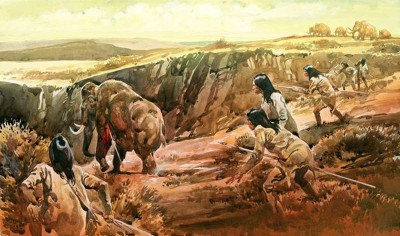
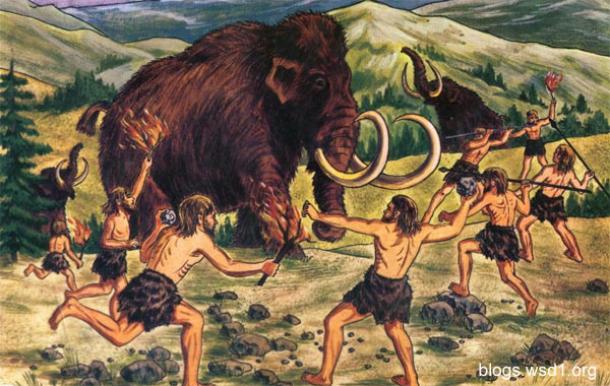
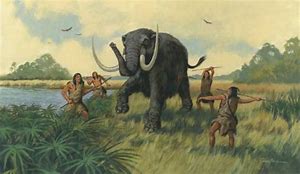
We are a stone age family looking for a new home. We are walking through a forest. There are no cities, towns or villages anywhere. There were not many people in the Stone Age. We are in Germany about 40,000 B.C. It does not get very warm in summer and it is cold in winter. But we are in a forest and everything is green because it is summer. To the North there is ice all the time. To the south are the Alps and there is also ice all the time.
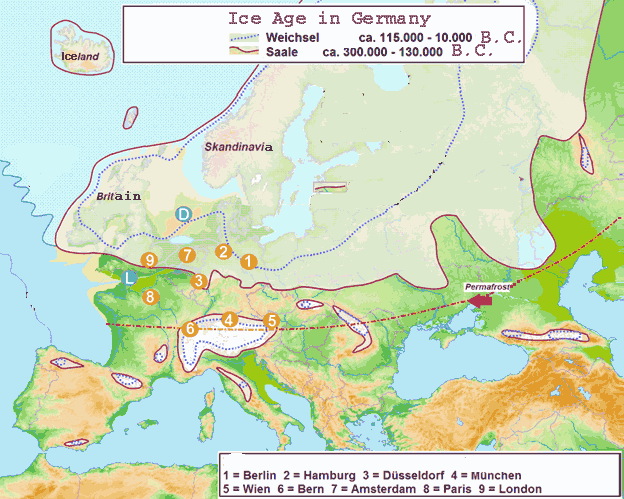
4. Who made the path through the forest?
2. What are we looking for, for a good place to make our home?
3. What do we eat?
4. How do we get our food?
5. How do we cook our food?
6. What do we wear?
7. How do we get our clothes?
8. What tools do we use?
9. Where do they come from?
40. Who are our enemies?
44. How do we protect ourselves?
42. How do we keep warm?
43. What do we do in our free time?
44. When was the Stone Age?
45. Why is it called the Stone age?
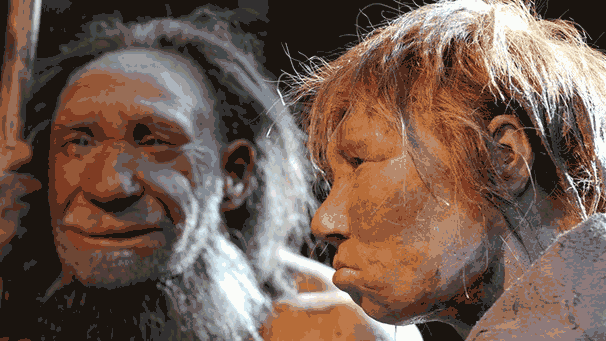
ANSWERS
4. Animals make paths in forests that lead them to where they can find food.
2. Stone age people survived by hunting and gathering. For this reason, they did not live exclusively in caves Cavemen typically lived in shelters constructed of animal hides stretched across bones, wooden lean-tos or mounds made of dirt. Neanderthals, another species of cavemen, did live in caves almost exclusively, although the harsh climates of their environment forced them to use circulating mobility and radiating mobility to survive.
3. Food mammoths and rhinoceroses, nuts, plants, honey, snails, wild boar, oat porridge
4. hunting all kinds of animals including mammoths and gathering wild plants, fruit, vegetables, nuts, beans, even wild grain
• 5. Heated rocks (grilled upon), sticks (spit), tightly woven baskets (filled with broth hot rocks were dropped into it to heat the broth up), some items may have just been placed on hot coals then removed later with a stick (baked potatos, yams) how about a pouch of leather hung above the fire or coals and allowing the contents to cook in their own juices (meat, fruits and vegetables)..
•
Flint could also be used in conjunction with nodules of iron pyrites and would create a spark when struck together and giving the rise to fire .
• hammerstones that showed evidence of battering, and stone cores, used for a variety of purposes, such as chopping and grinding food. These stone cores could also produce sharp stone flakes when struck; the stone flakes were in turn used for cutting.


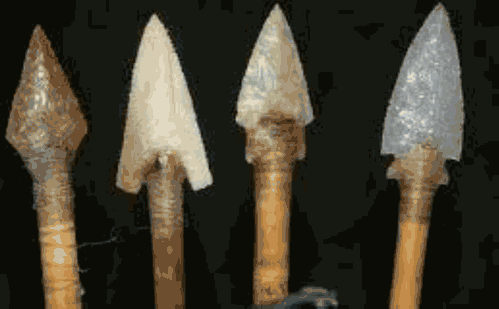
• 6. fur and leather garments made from the animals hunted for food.
7. people made their own clothes. They could cut with their tools. They could make bands to tie the clothes around their waste, arms, legs or neck.
8. An early Stone Age invention was the hand axe, created by continually shaping large stone flakes. Other inventors during the Stone Age used similar techniques to create large, sharp points, which could be hafted on a wooden shaft to make a spear or attached to smaller shafts to make arrows and darts.
9. The main Stone Age tool was the flint, which can be found in cliffs or rocky places also volcanic rock
43. Paint. Most prehistoric paints were made from minerals like hematite, iron and limonite that oxidize and combine to form a pigment called ochre. Charcoal, burned bones and ground calcite were also used. These materials were mixed with animal fat or other binding materials to form the paint.
• Carve using wood, ivory from mammoth tusks, stone

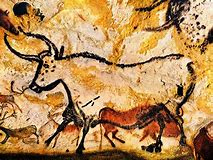
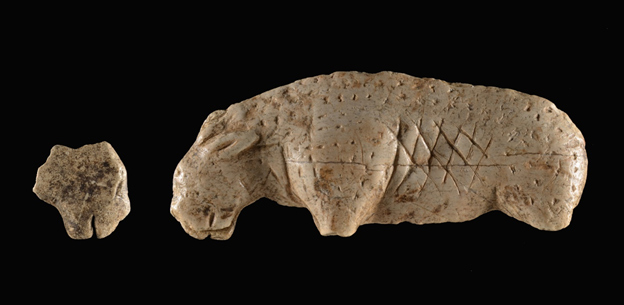
• This is a carved rhinoceros made from ivory.
• Stone age people also made symbols on cave walls
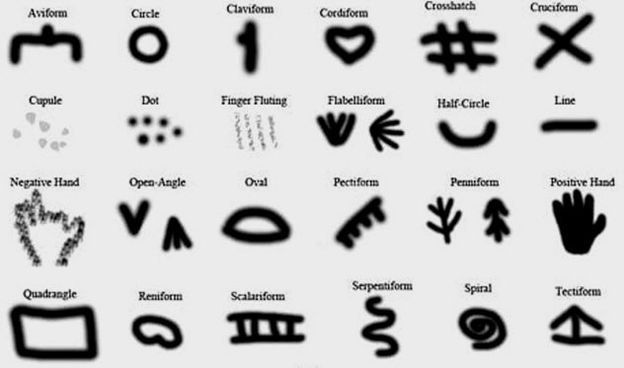
• 44. The Stone age began 2,6 Million year ago and ended about 4.000 years ago. It is divided into three different periods:
o Paleolithic or Old Stone Age
o Mesolithic or Middle Stone Age
o Neolithic or New Stone Age
o
• 45. The Stone Age is the name given to the earliest period of human culture when stone tools were first used. The Stone Age ended when people began smelting metal.
SOCCER
Torhüter - goalkeeper
Verteidiger - Defender
Innenverteidiger - middle back
außenverteidiger - wing back
Mittelfeldspieler - midfielder offensive or defeinsive -
center left wing or center right wing
Stürmer - forward or striker
Mittelstürmer - centre-forward
Außenstürmer - winger
Kapitän - skipper
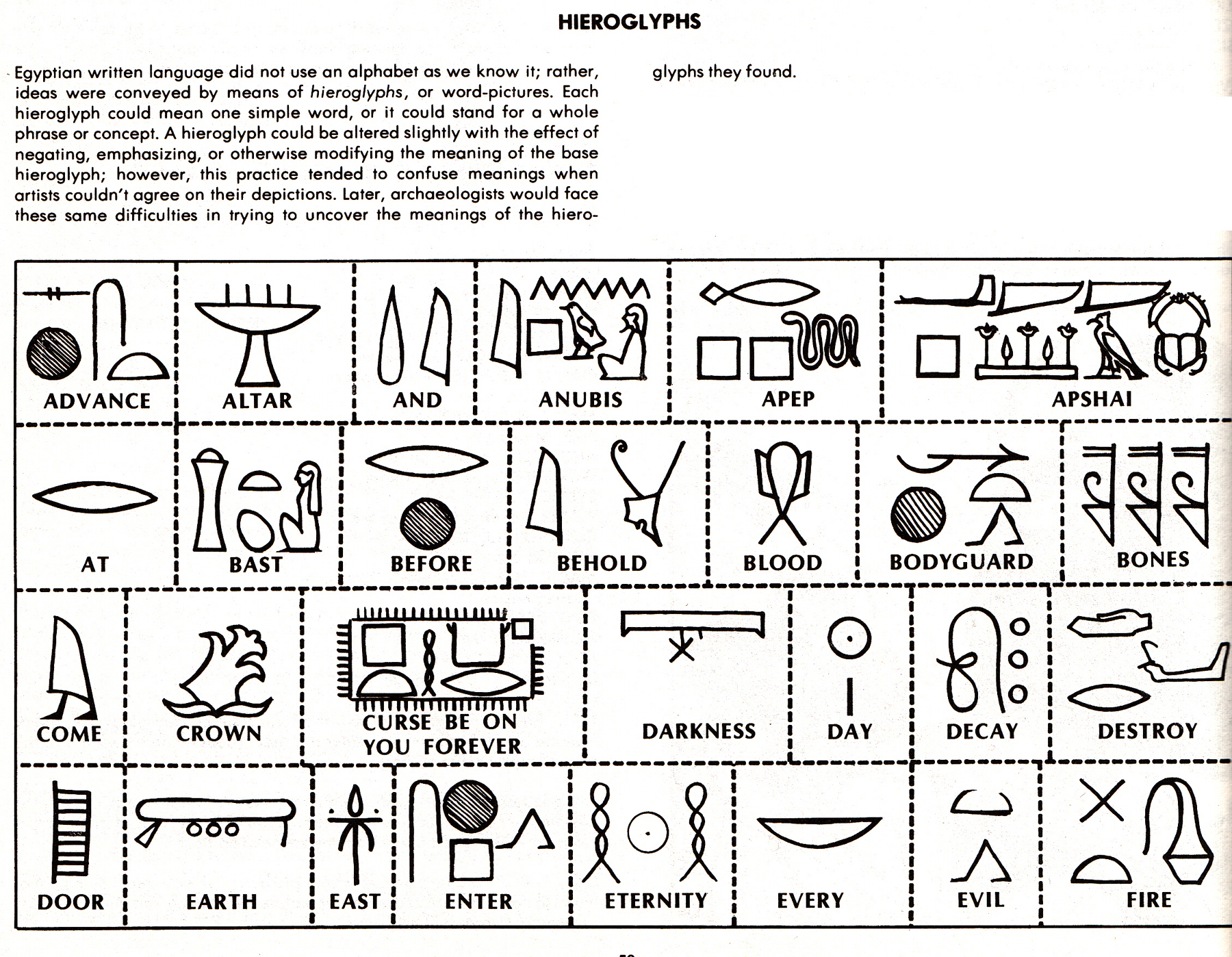
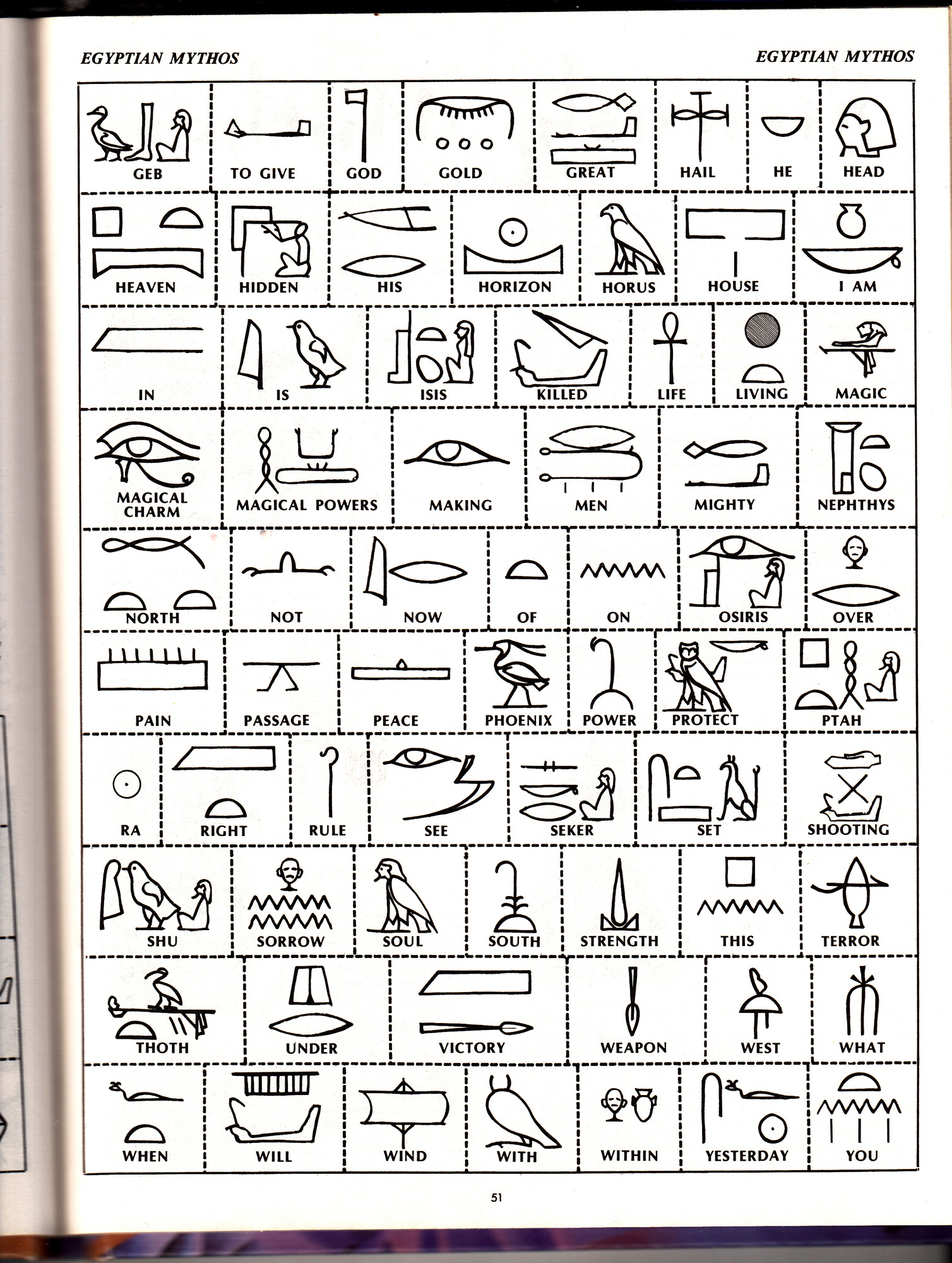
 Click here to go to Puzzle Quiz.
Click here to go to Puzzle Quiz. Click here to go to Puzzle Quiz.
Click here to go to Puzzle Quiz. Click here to go to Treasure Hunt.
Click here to go to Treasure Hunt. 






























































 According to Navajo tradition, they were taught to weave by two holy ones: Spider Man and Spider Woman. The legend says that Spider Man created the loom of sunshine, lightning and rain, while Spider Woman taught the Navajo how to weave it.
According to Navajo tradition, they were taught to weave by two holy ones: Spider Man and Spider Woman. The legend says that Spider Man created the loom of sunshine, lightning and rain, while Spider Woman taught the Navajo how to weave it.




















.jpg)

 This is a photos of unidentified flying objects.
This is a photos of unidentified flying objects.



 Various exoplanets which could have life on them.
Various exoplanets which could have life on them. These are pictures of how aliens might look.
These are pictures of how aliens might look.

 This is an ancient drawing of an alien.
This is an ancient drawing of an alien. This is an Egyptian Hieroglyphic of an Ufo.
This is an Egyptian Hieroglyphic of an Ufo.





































